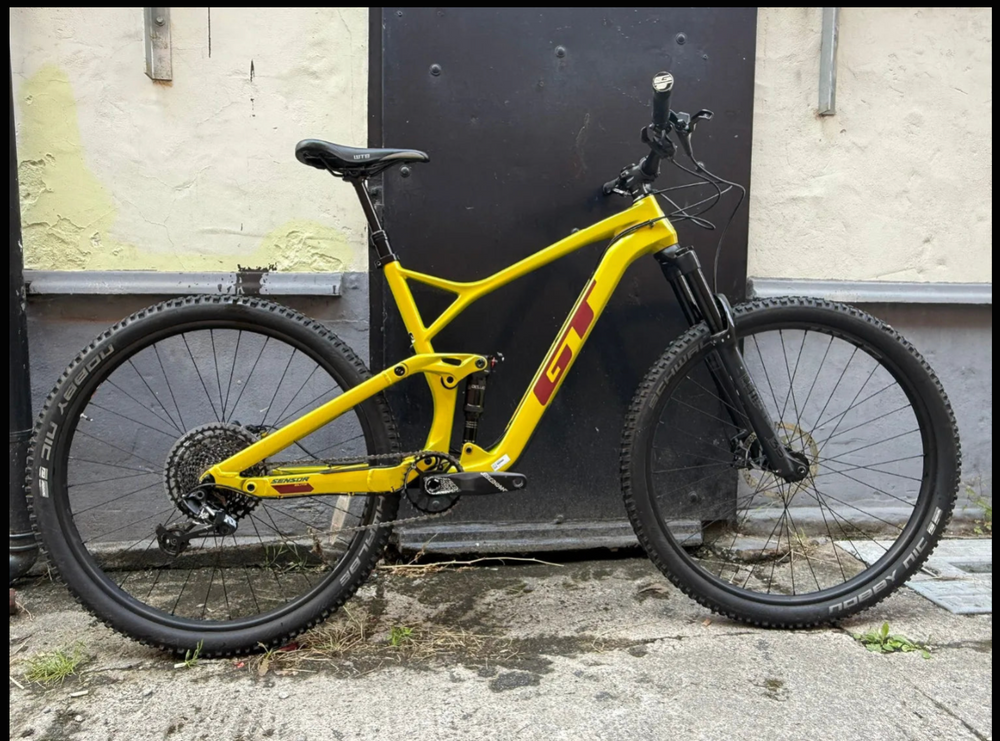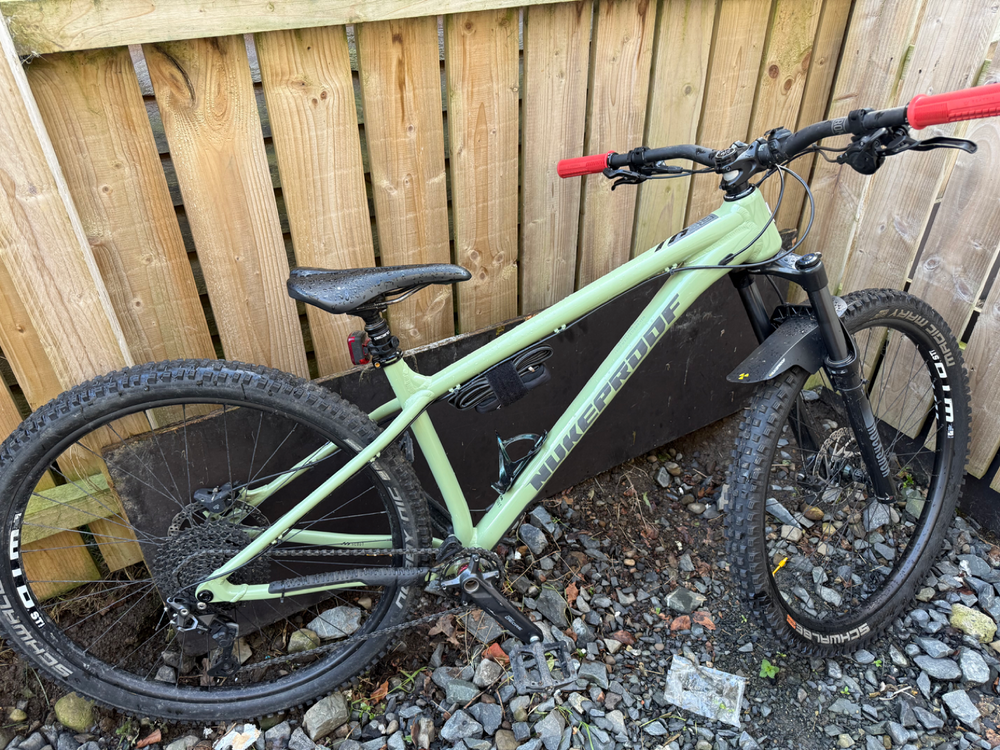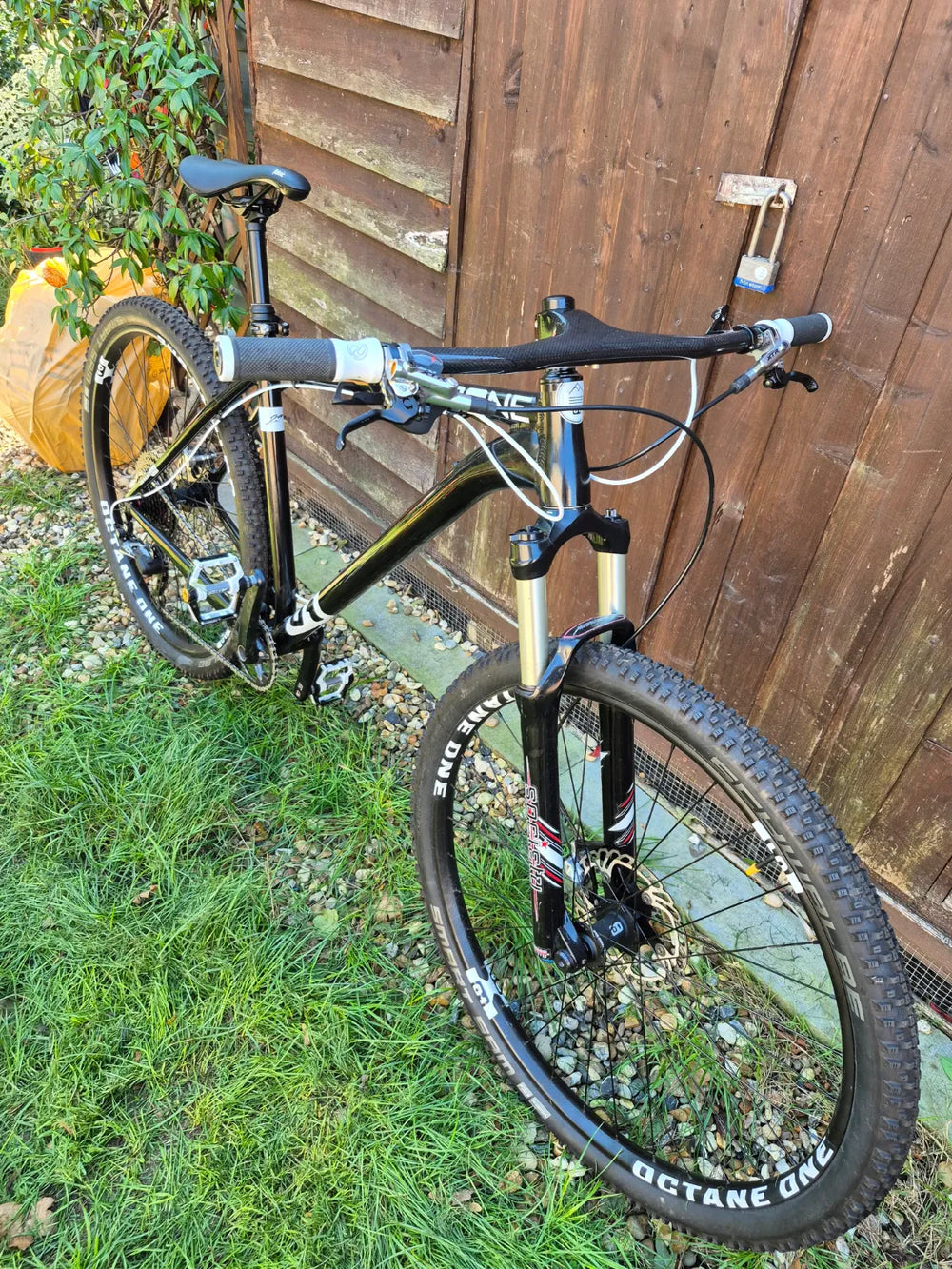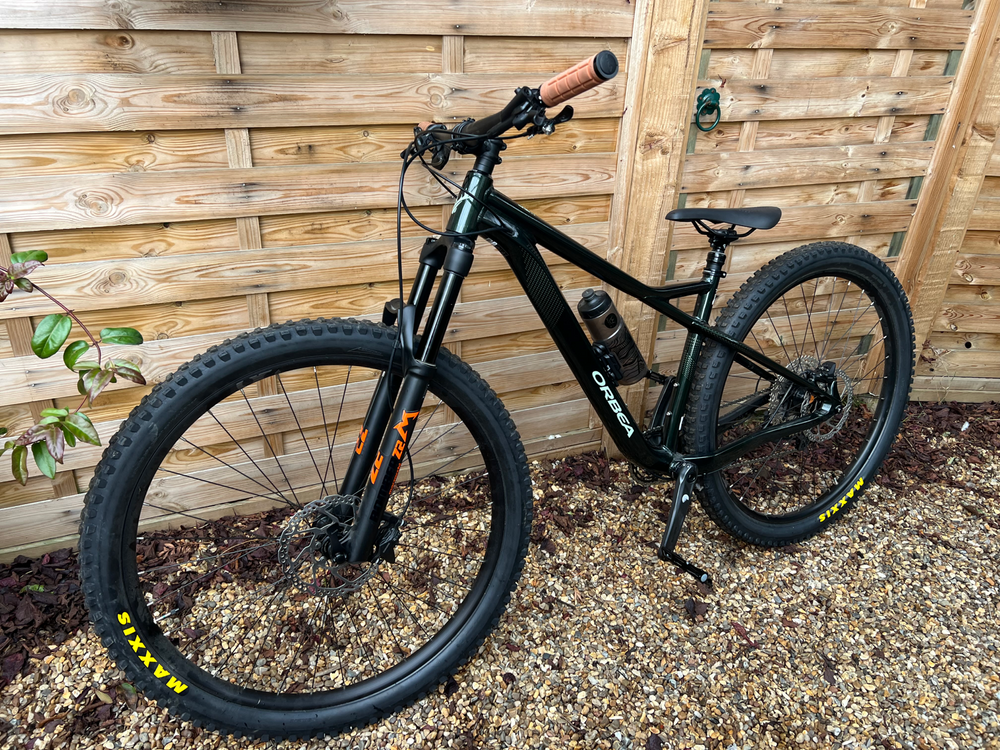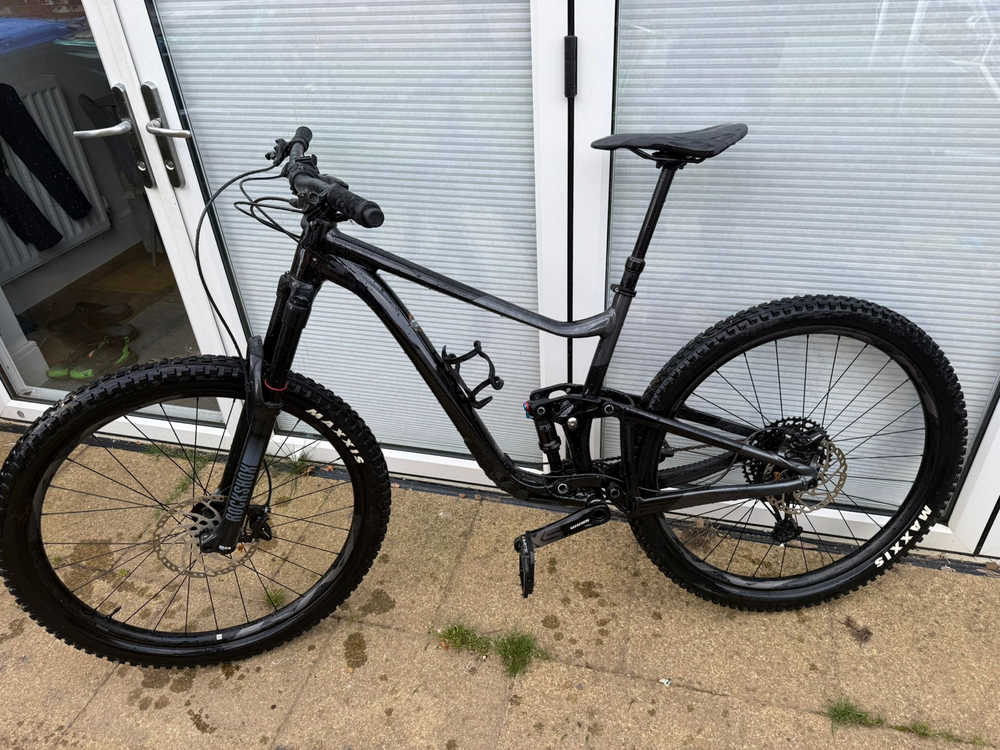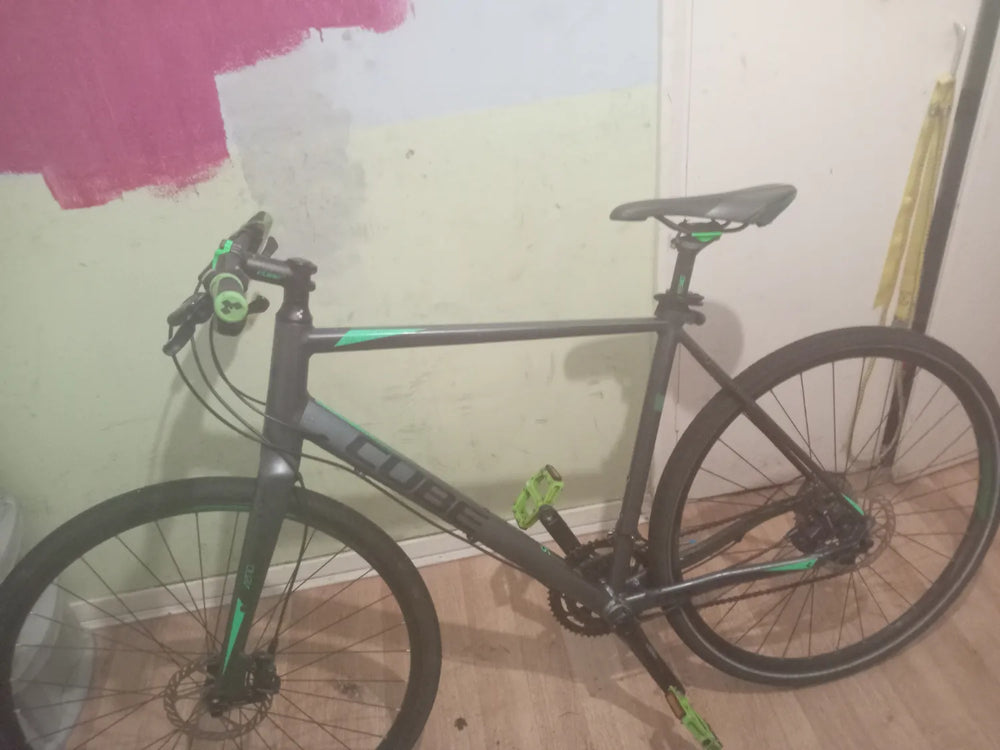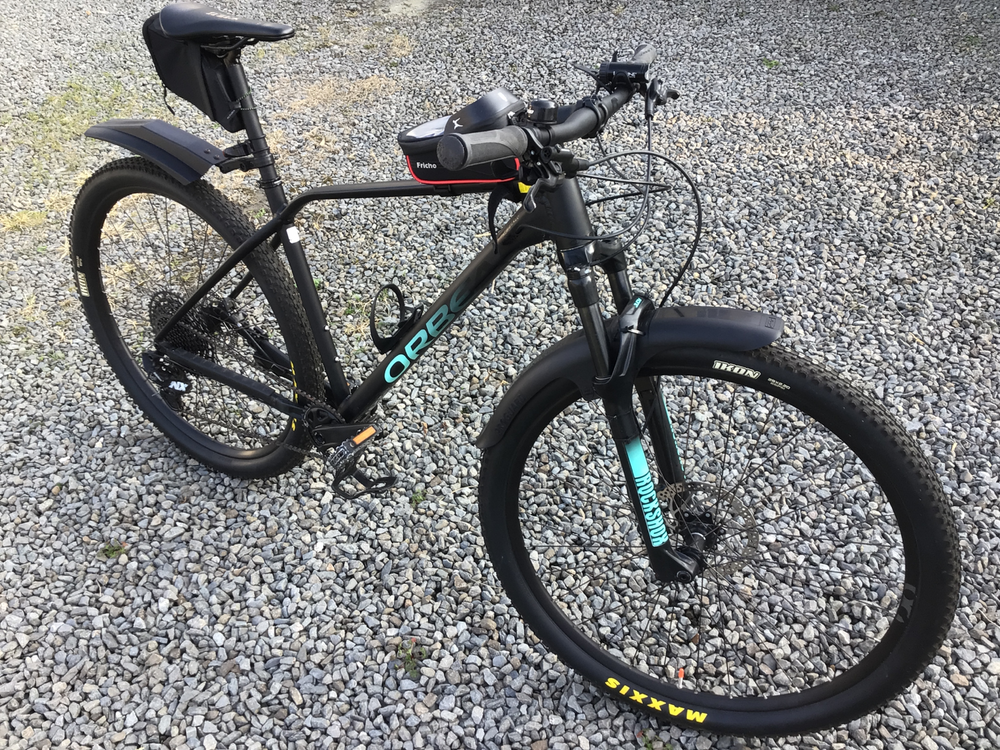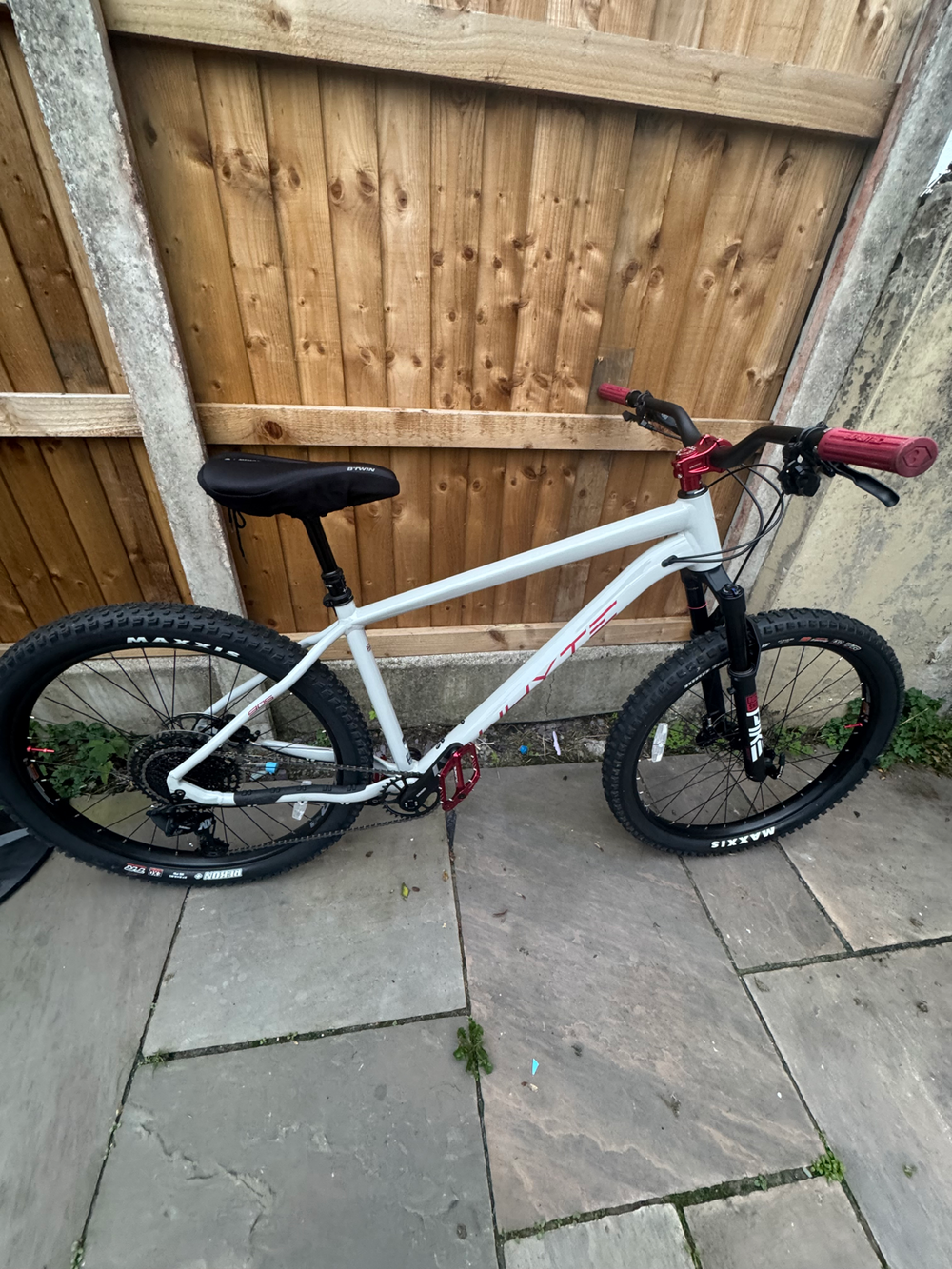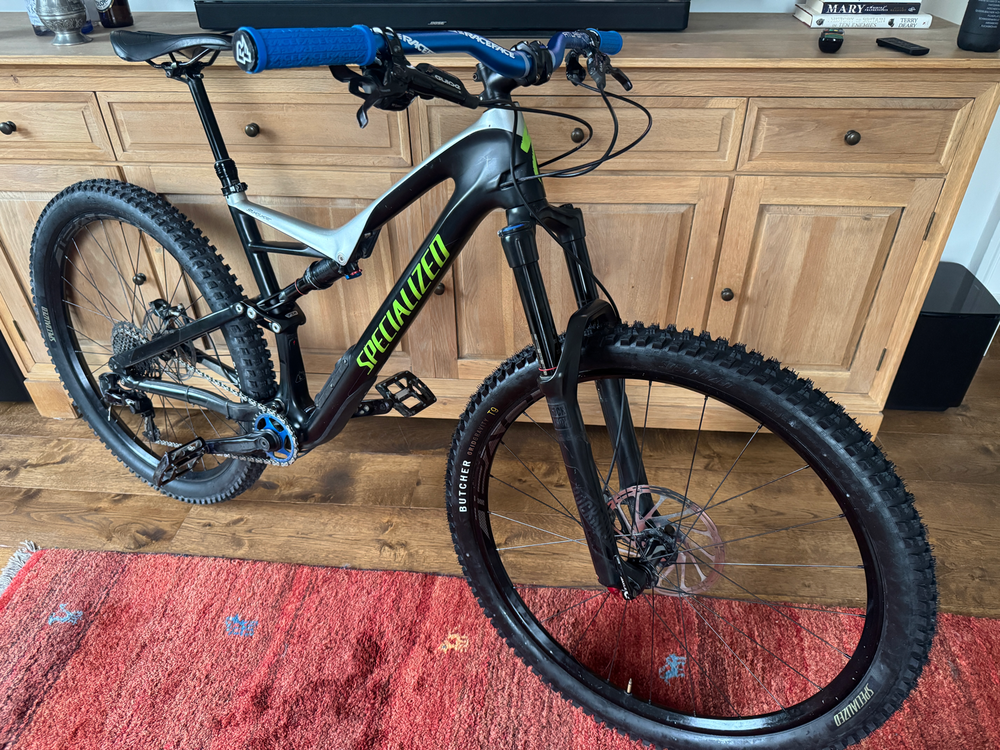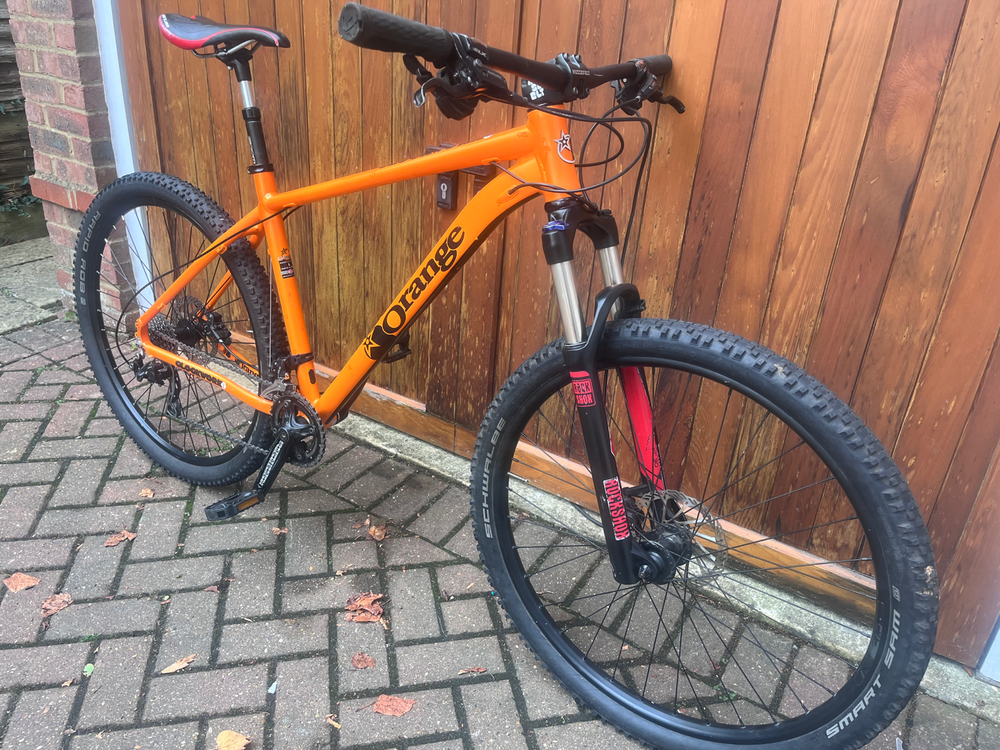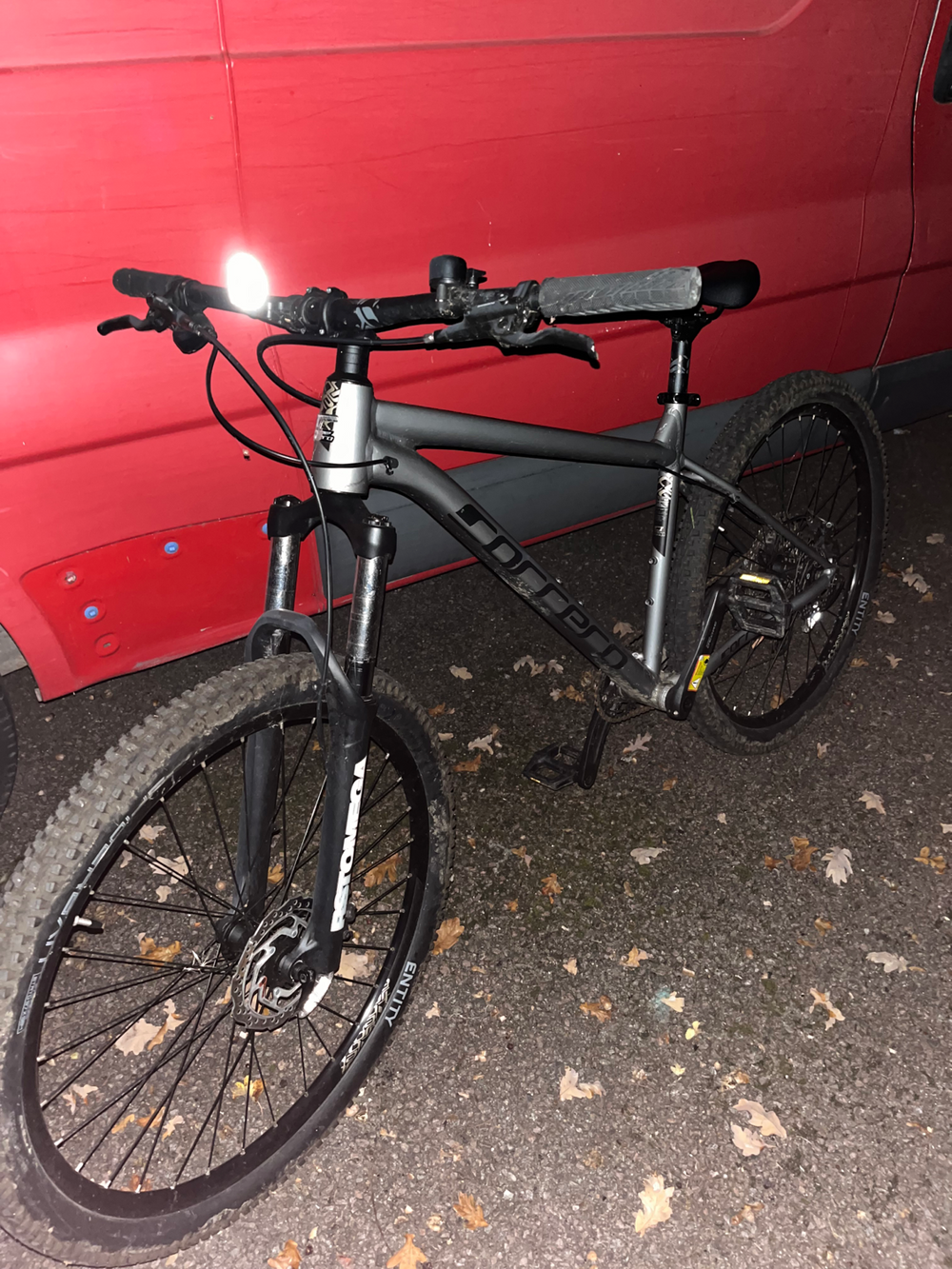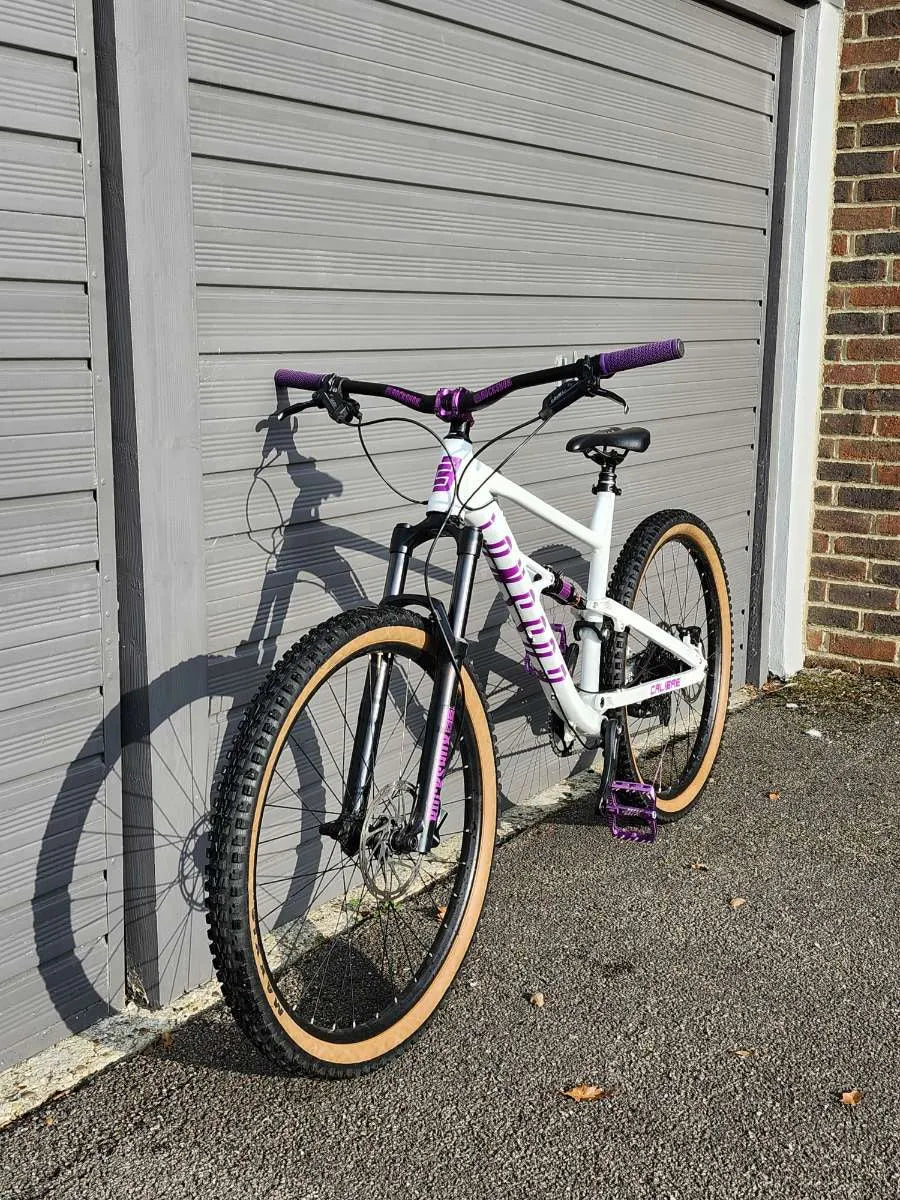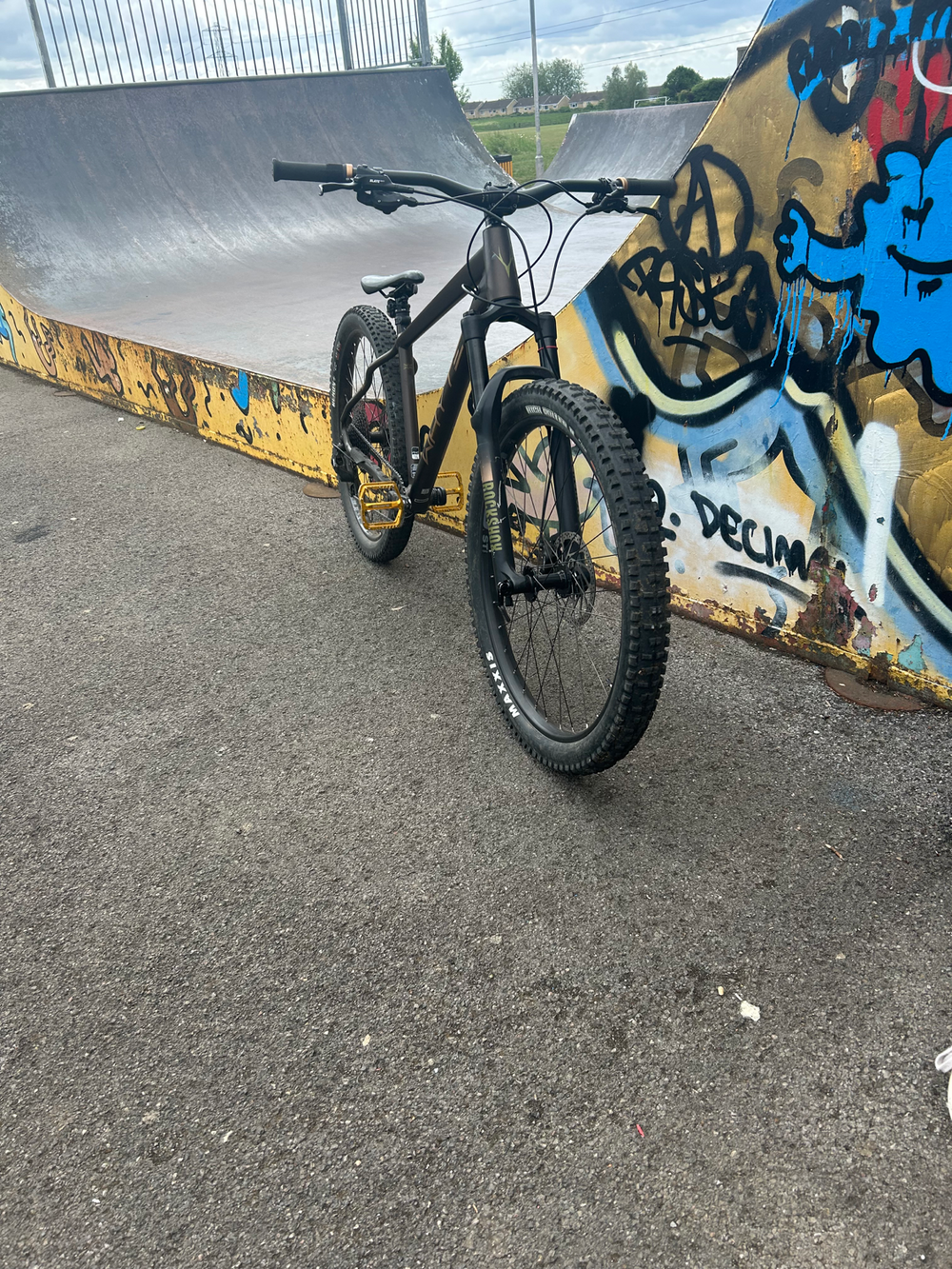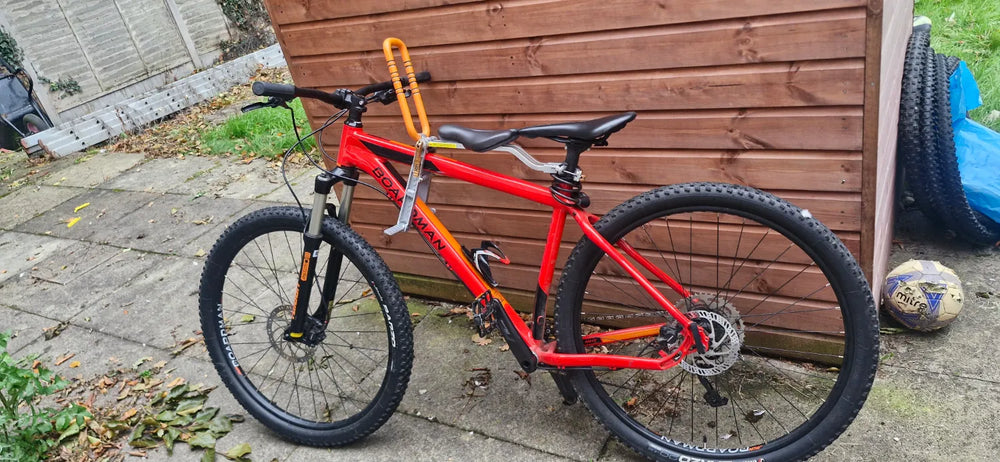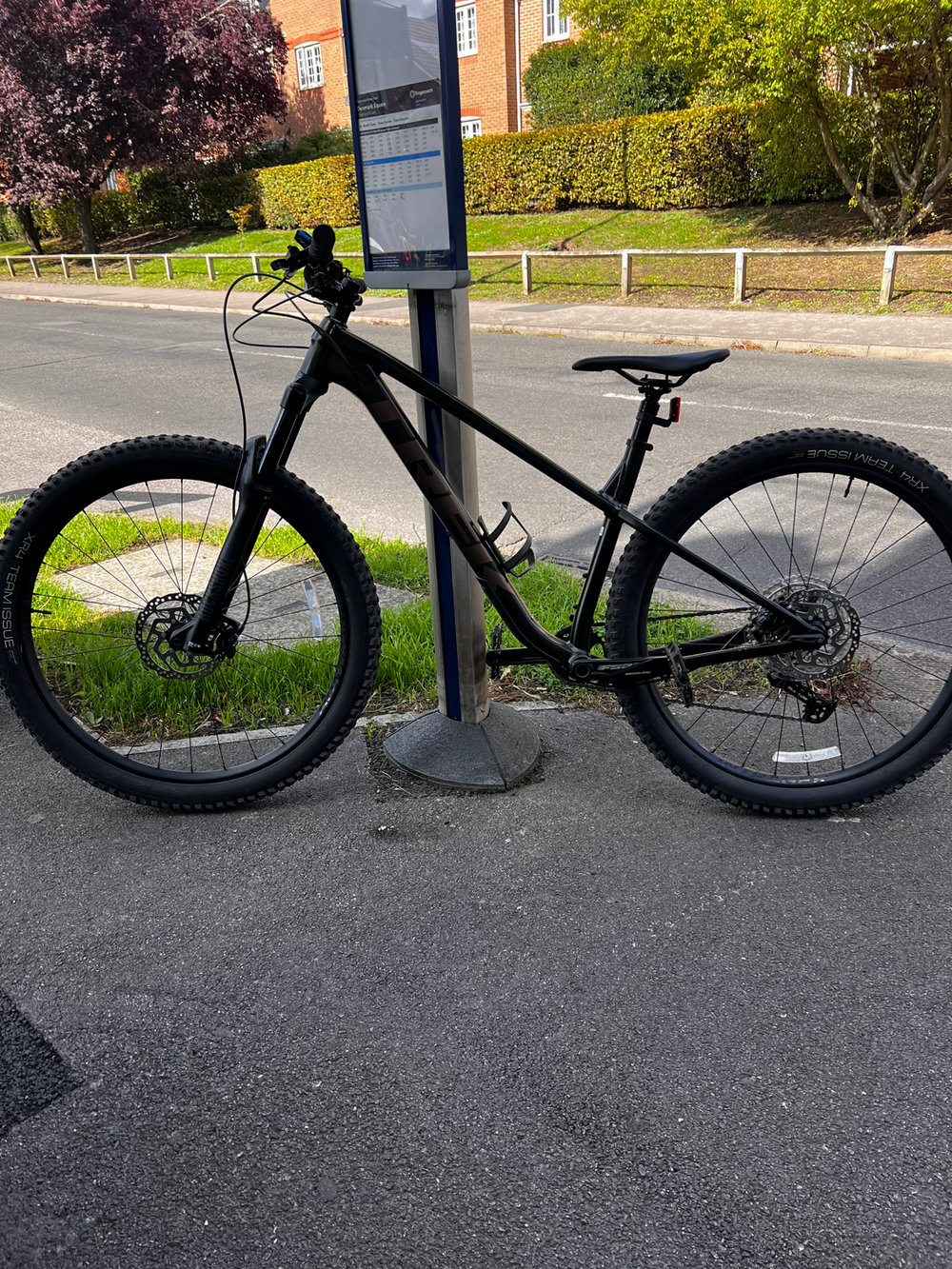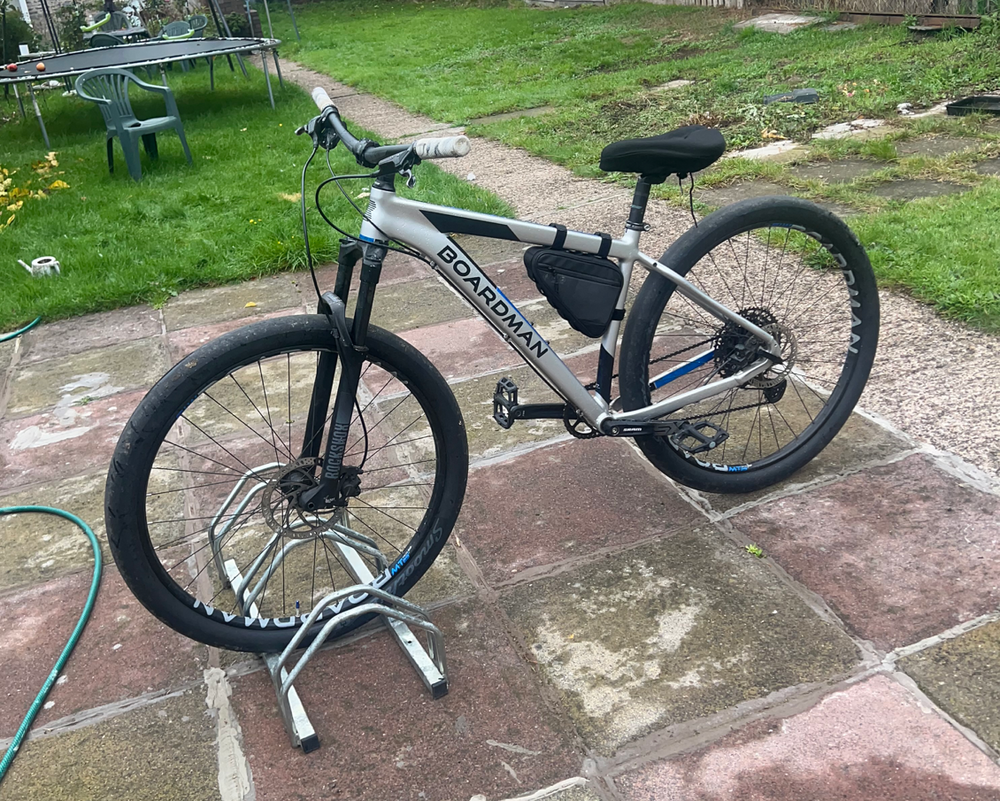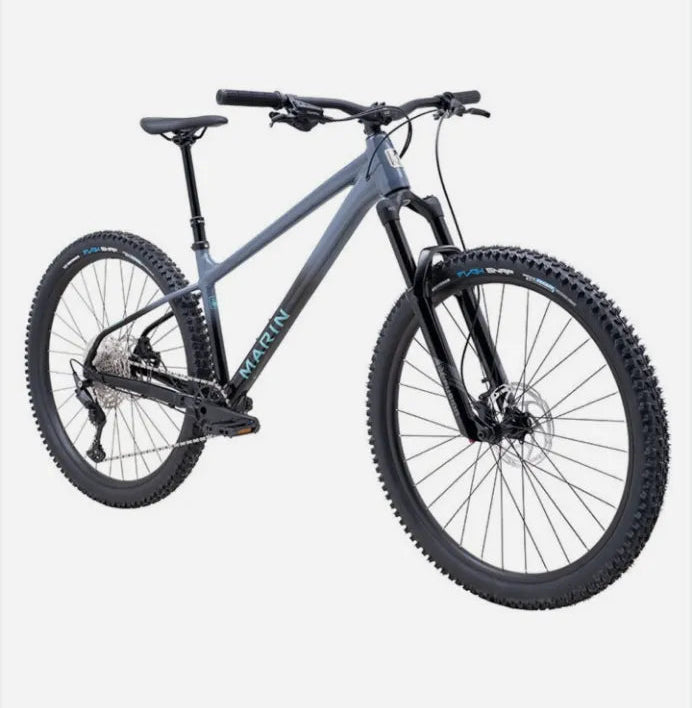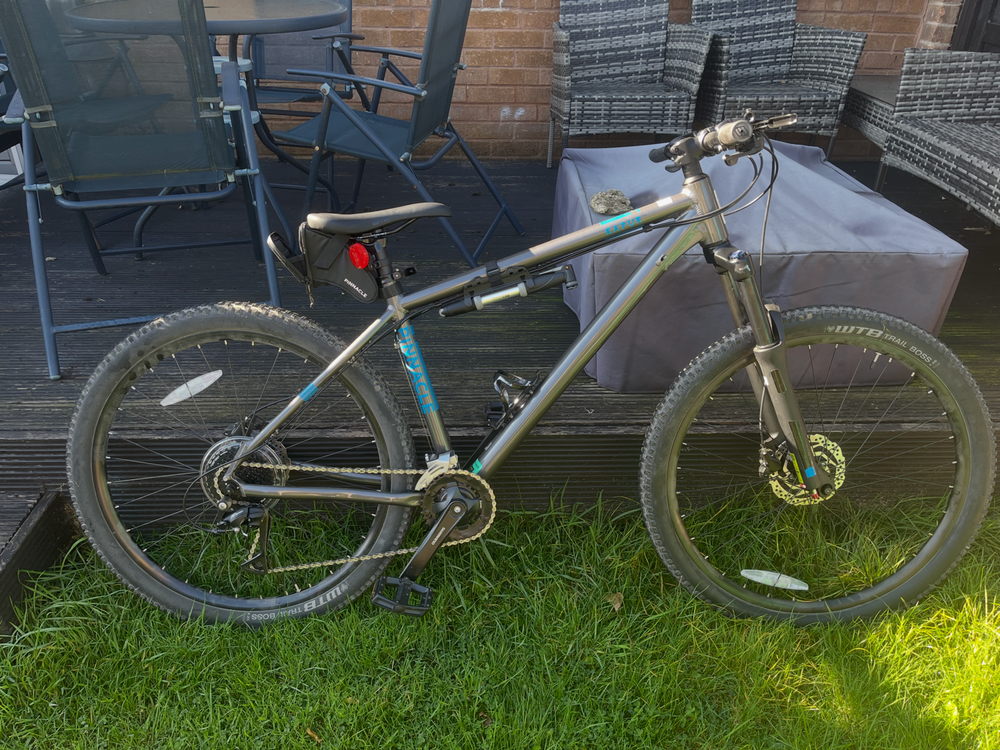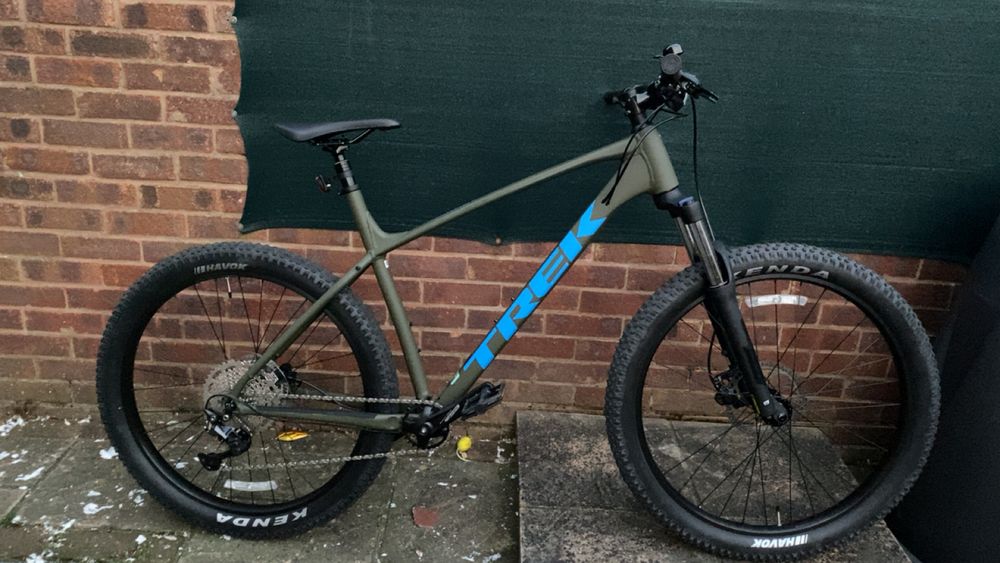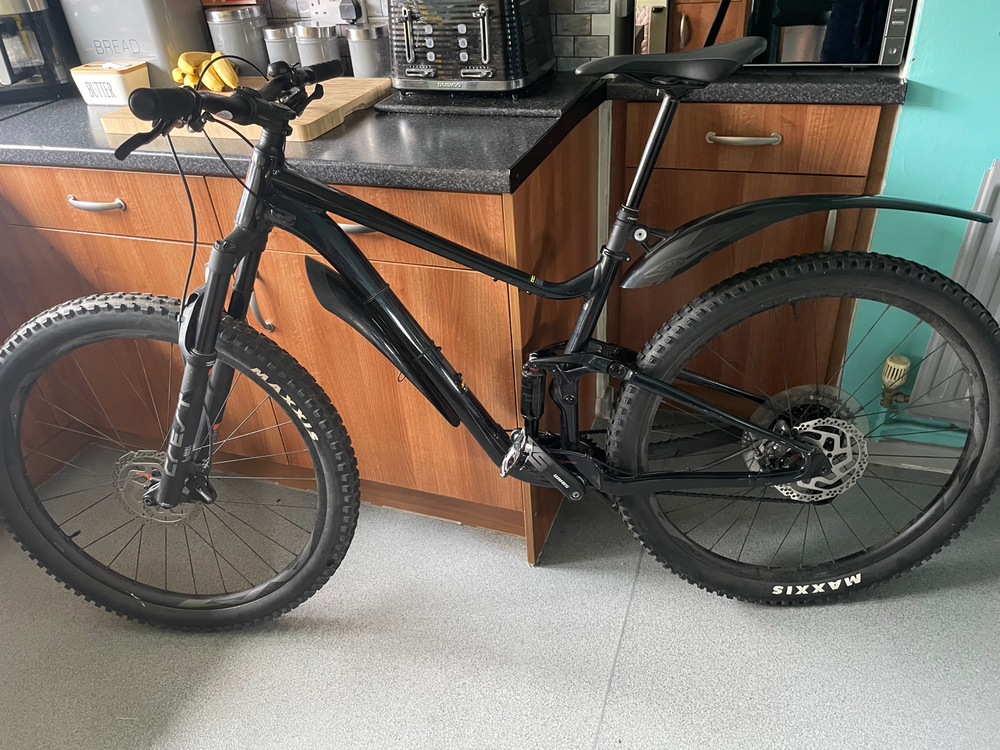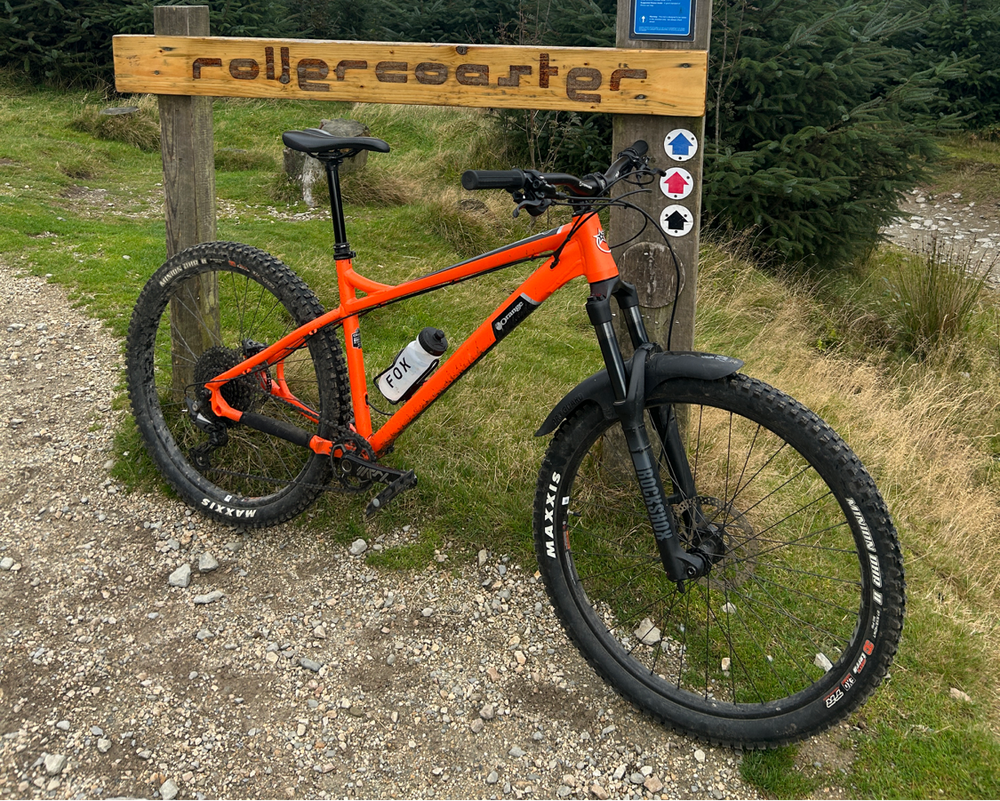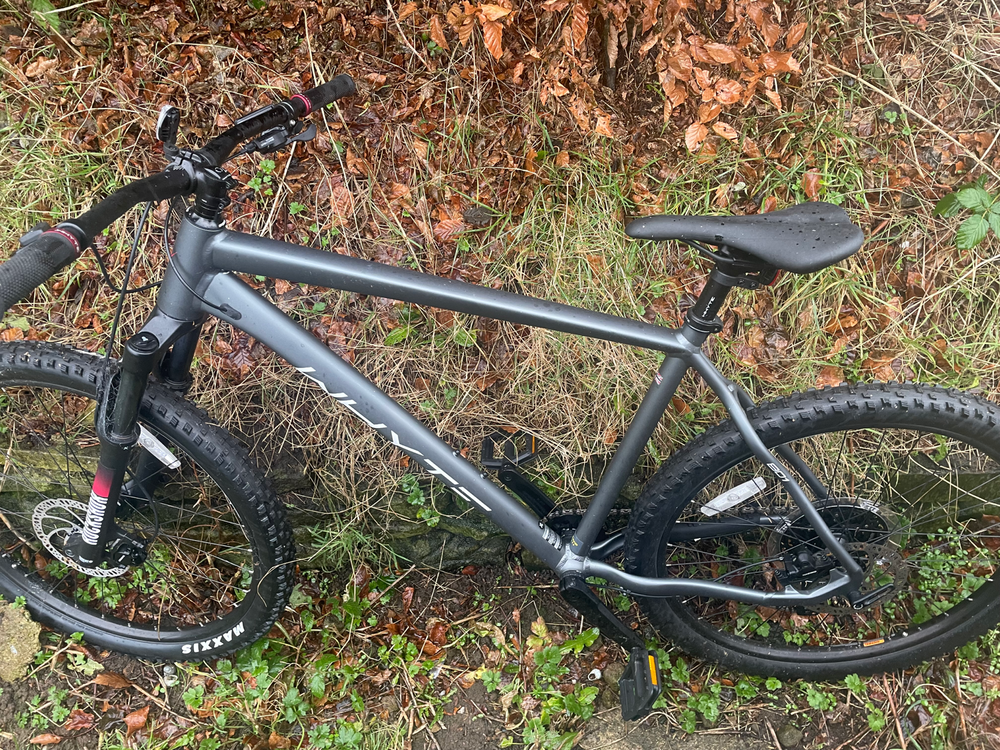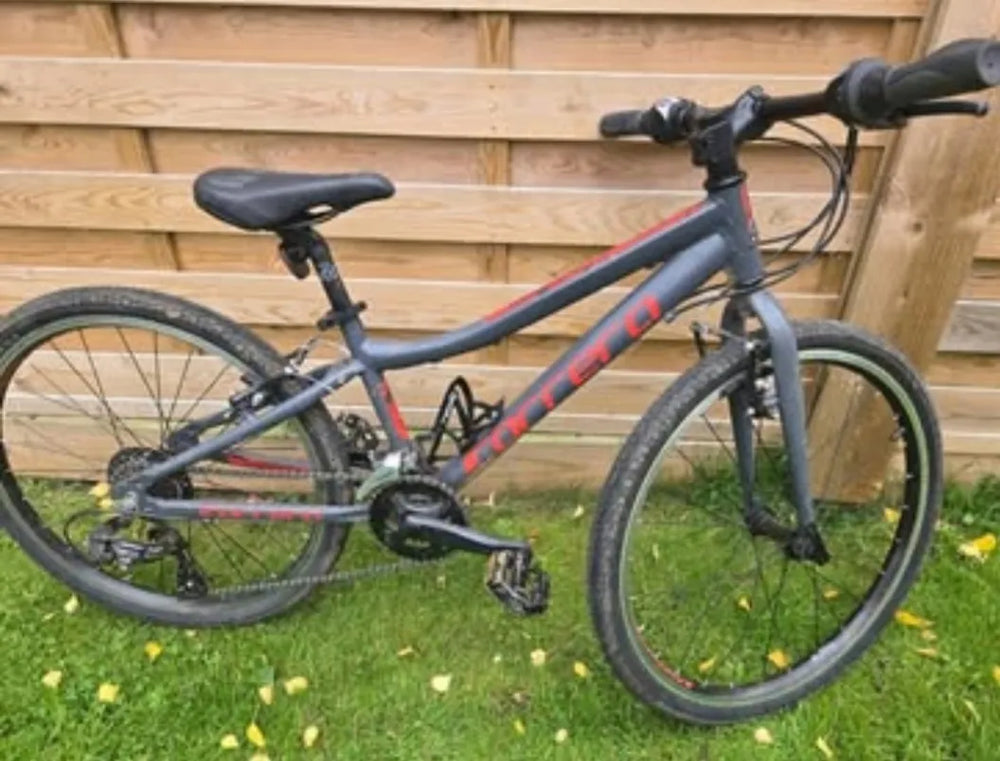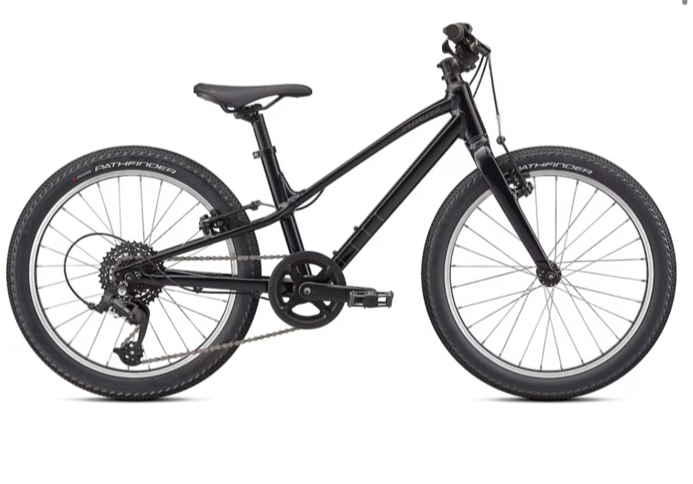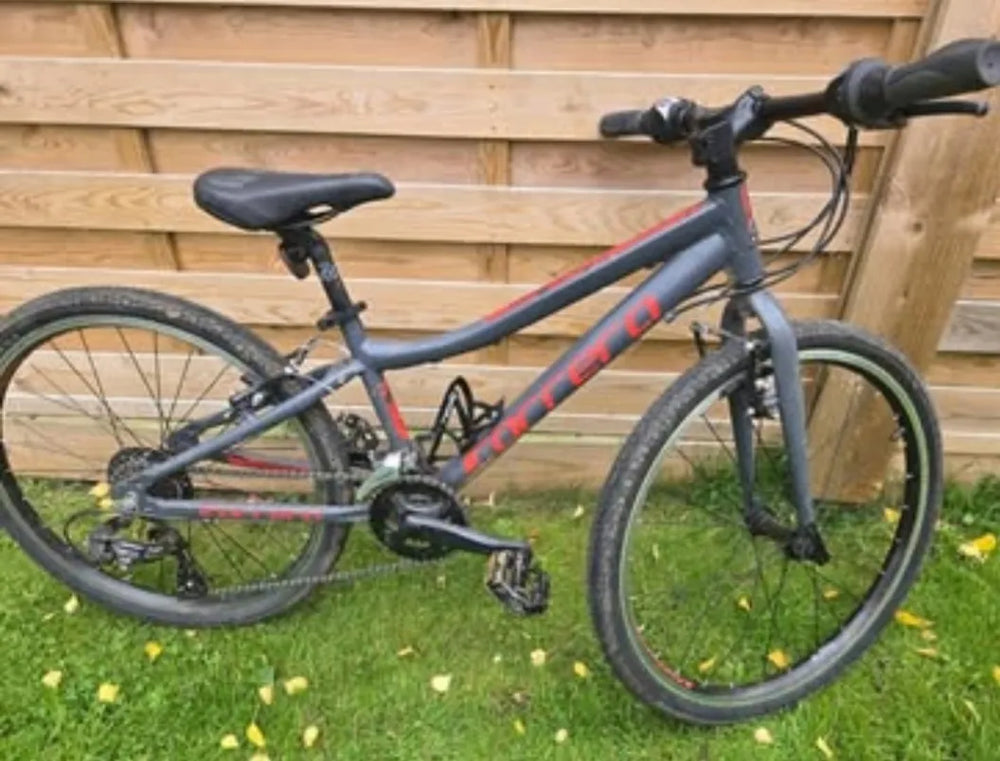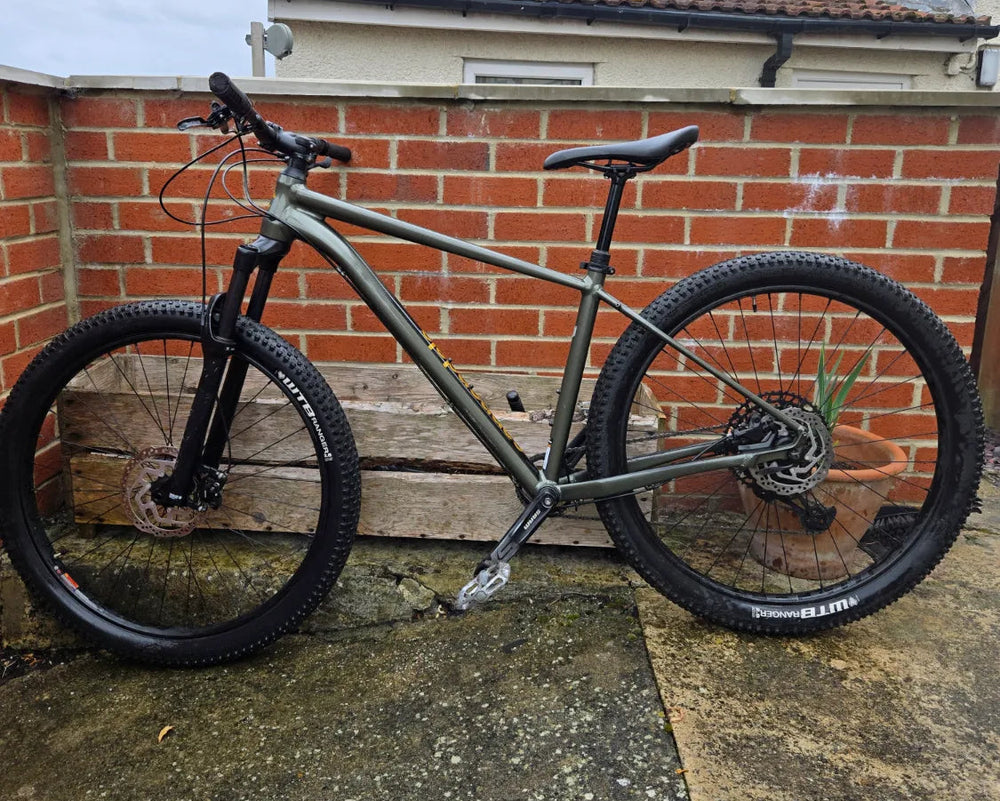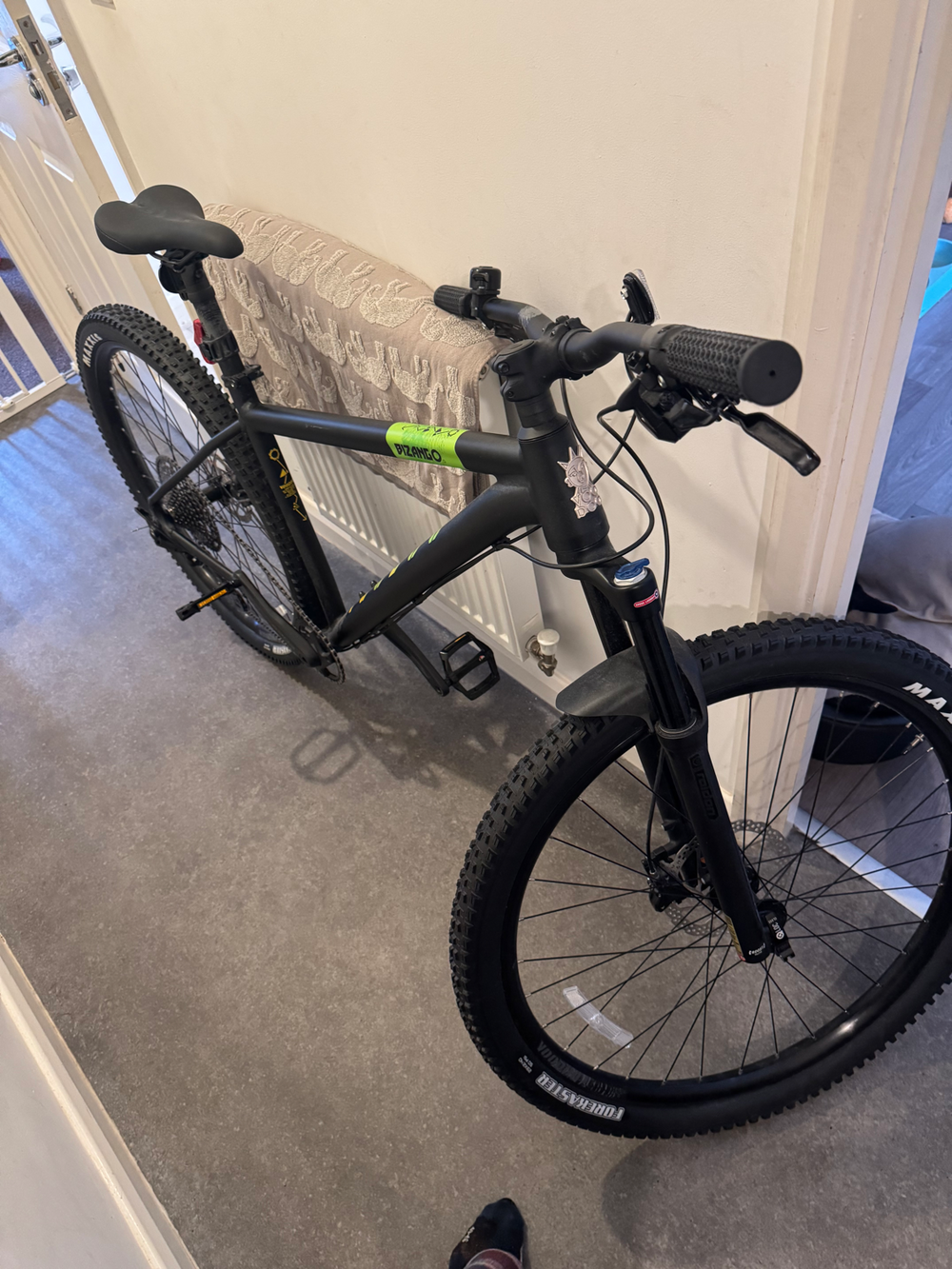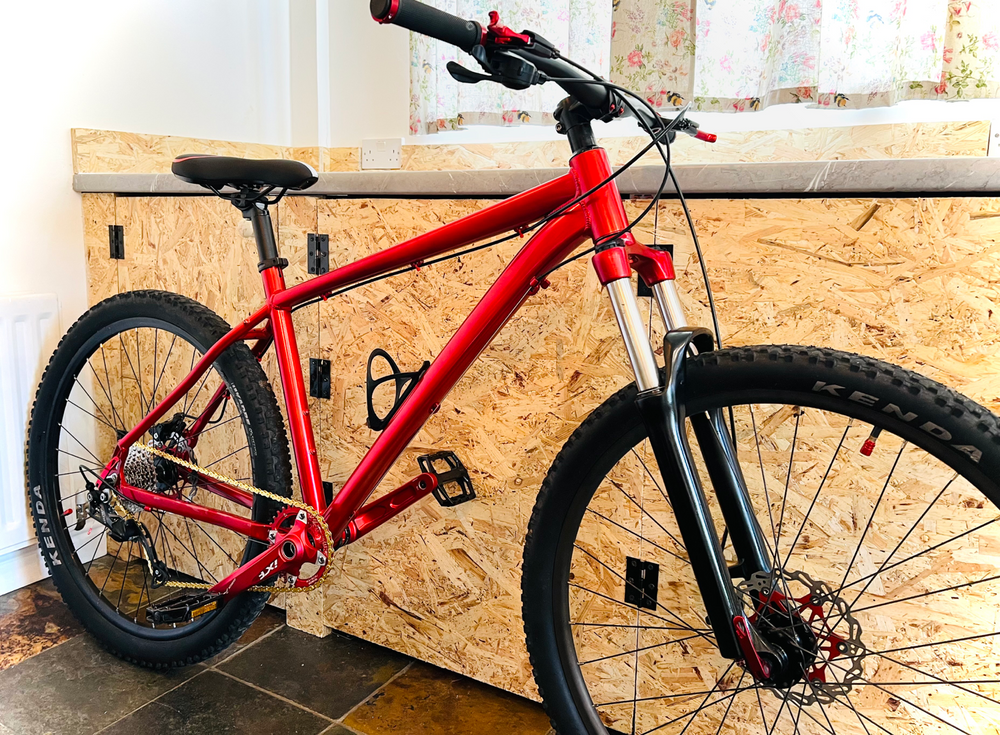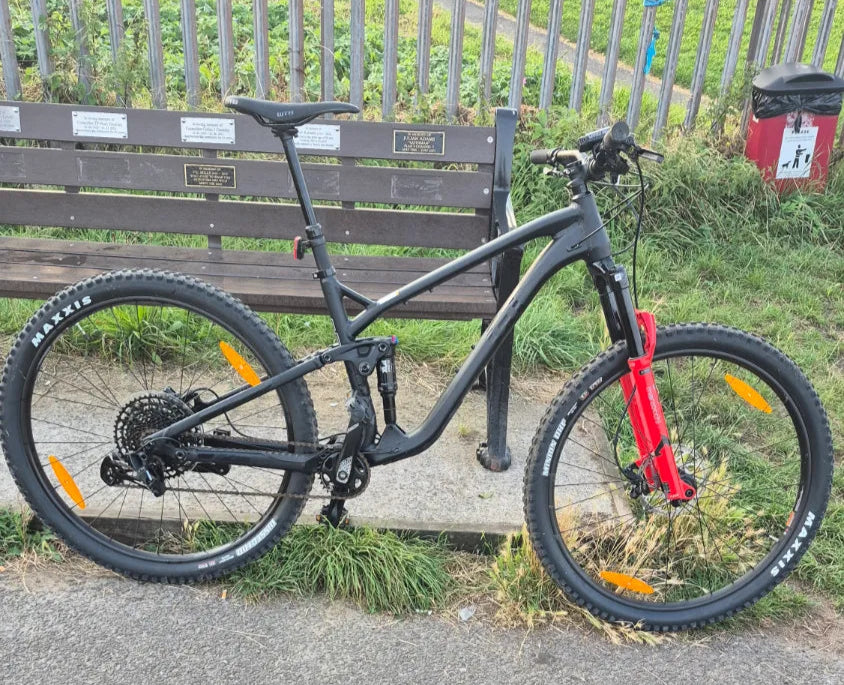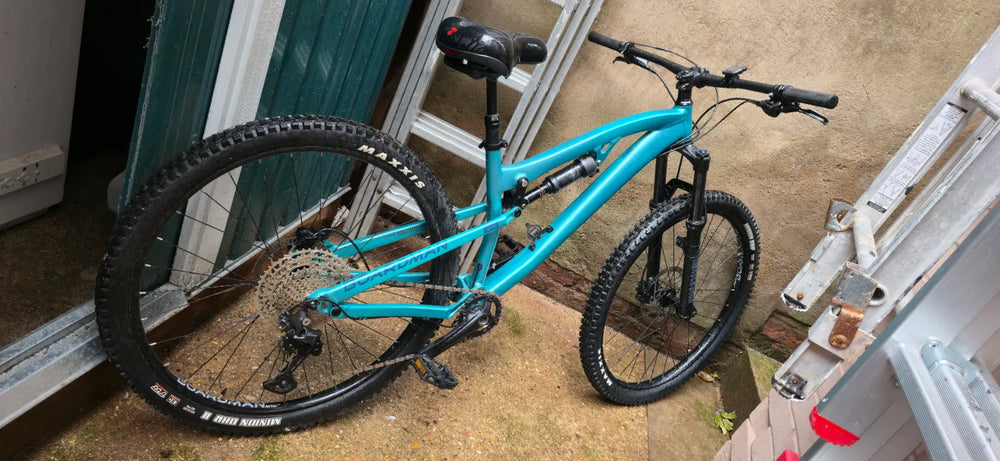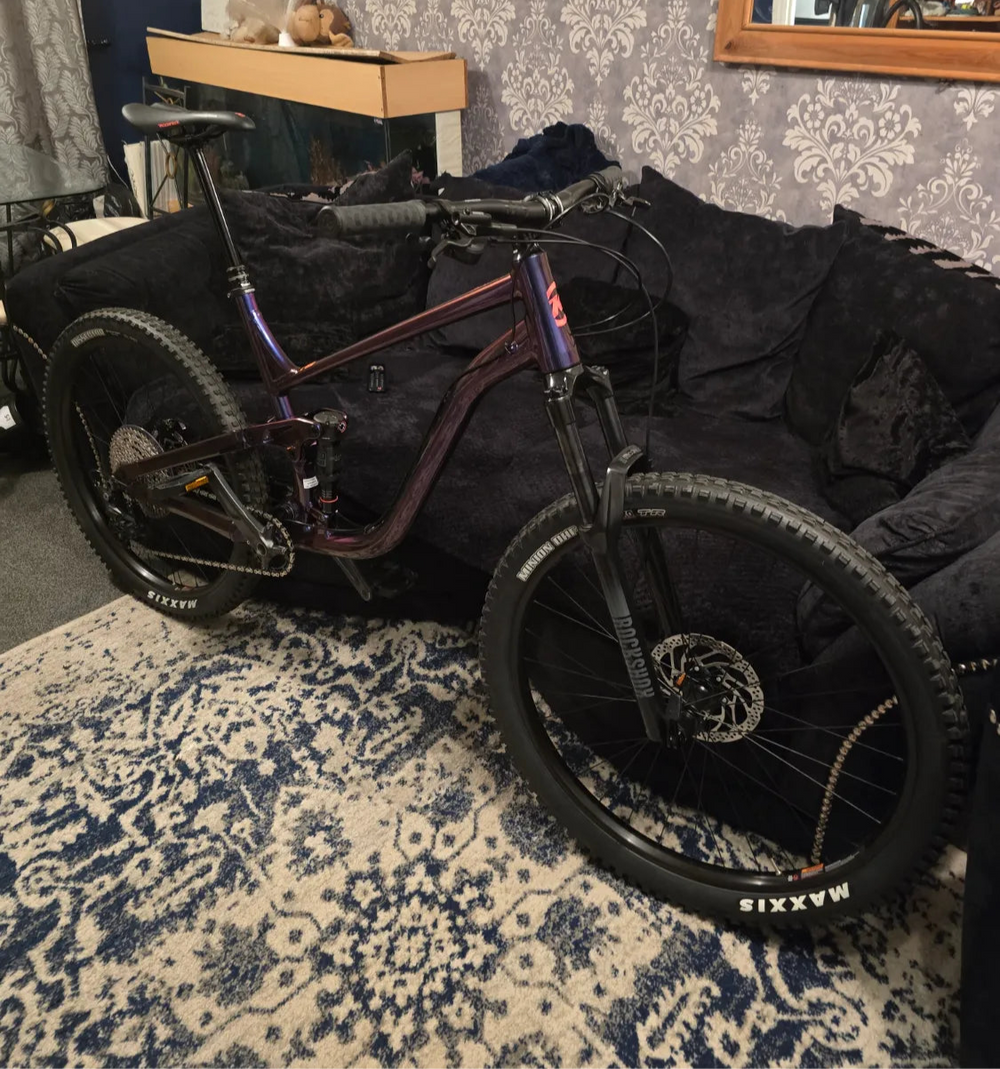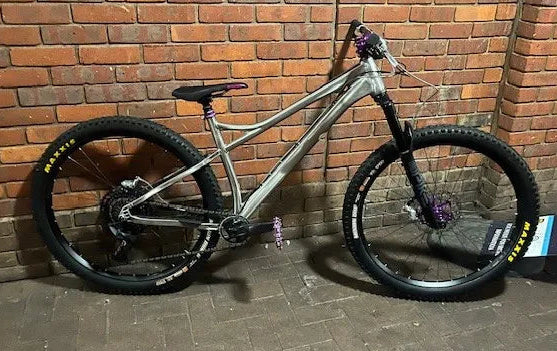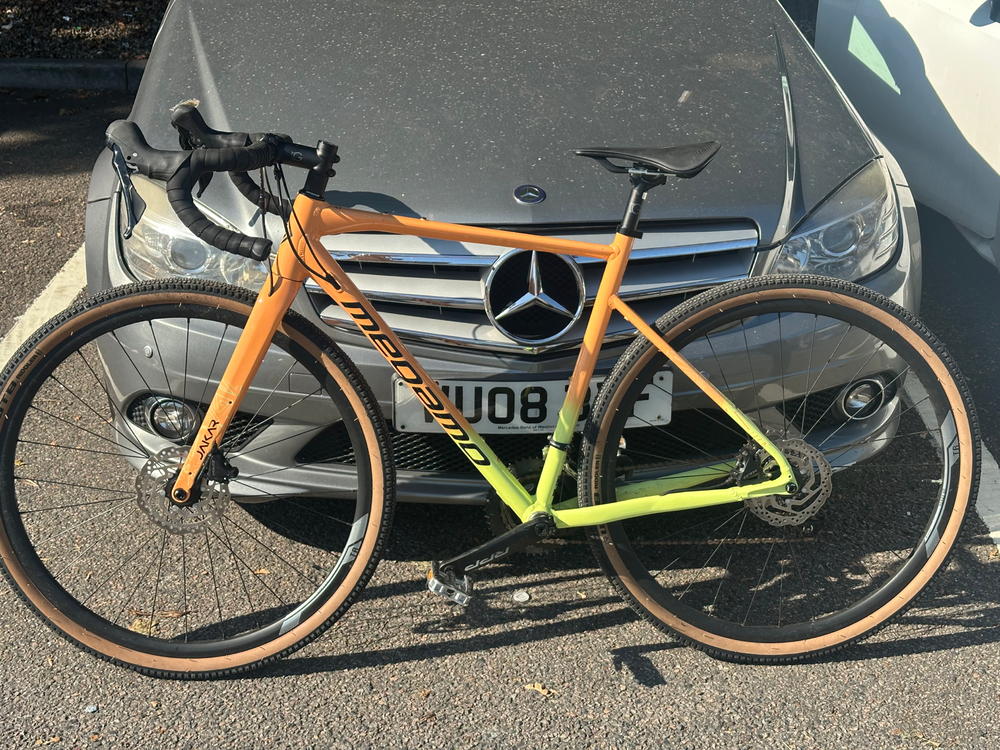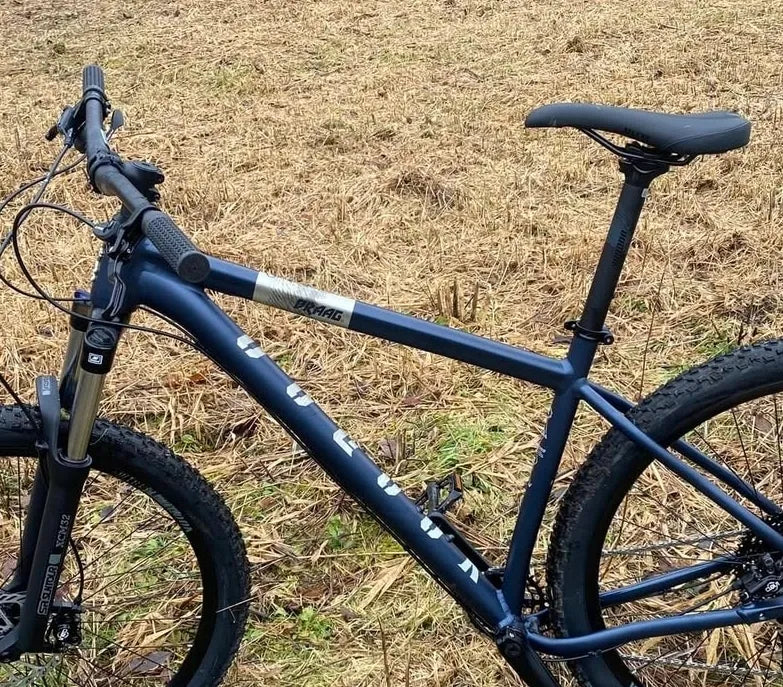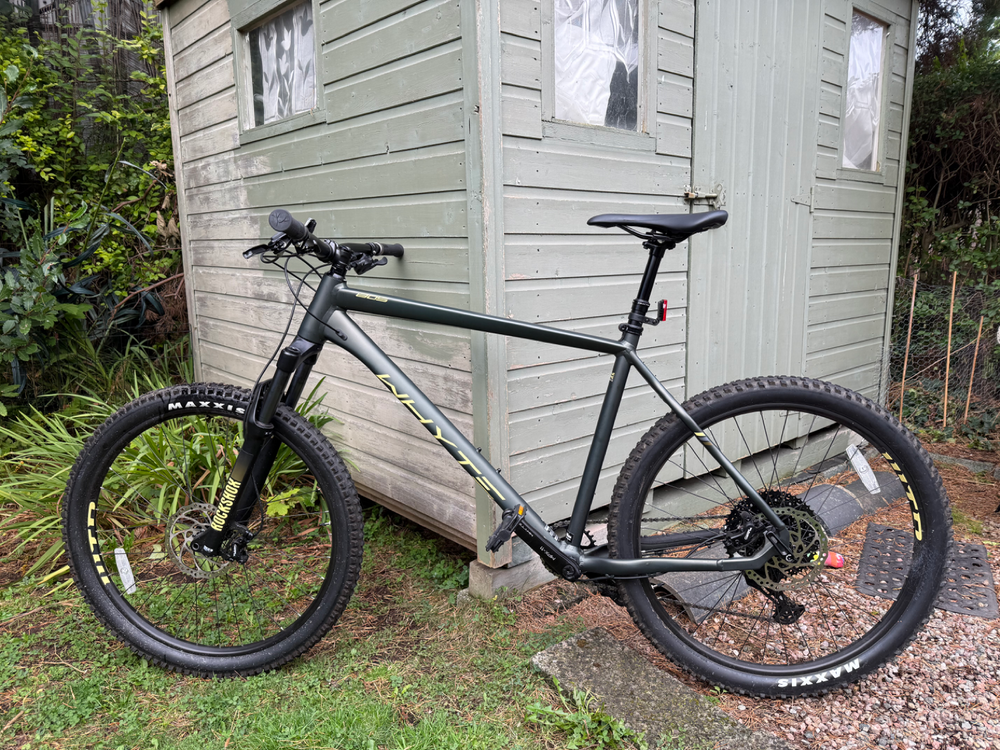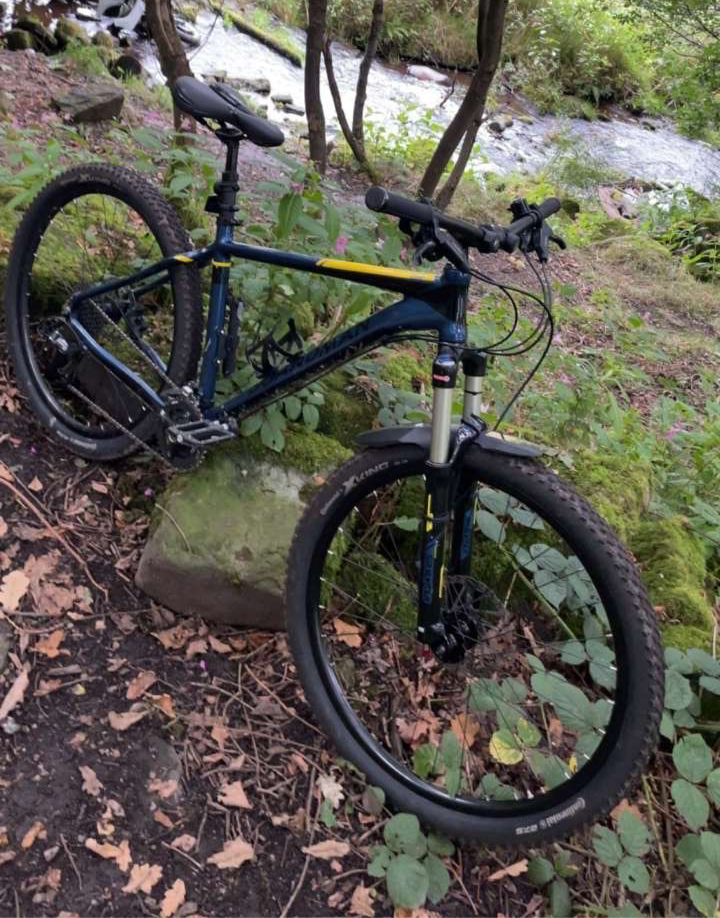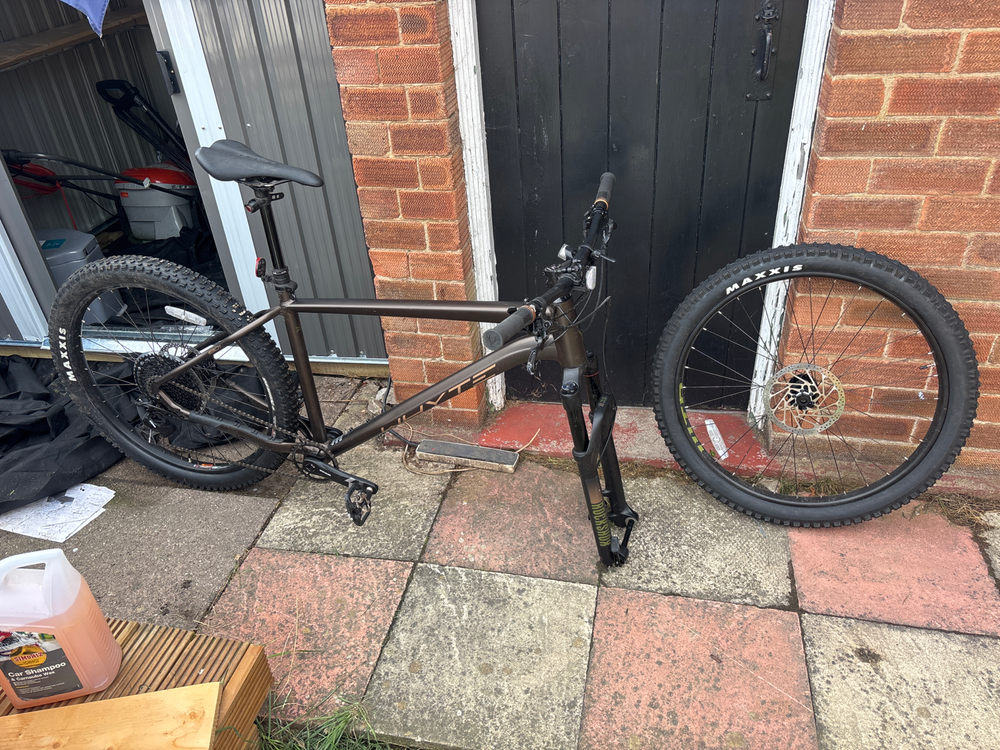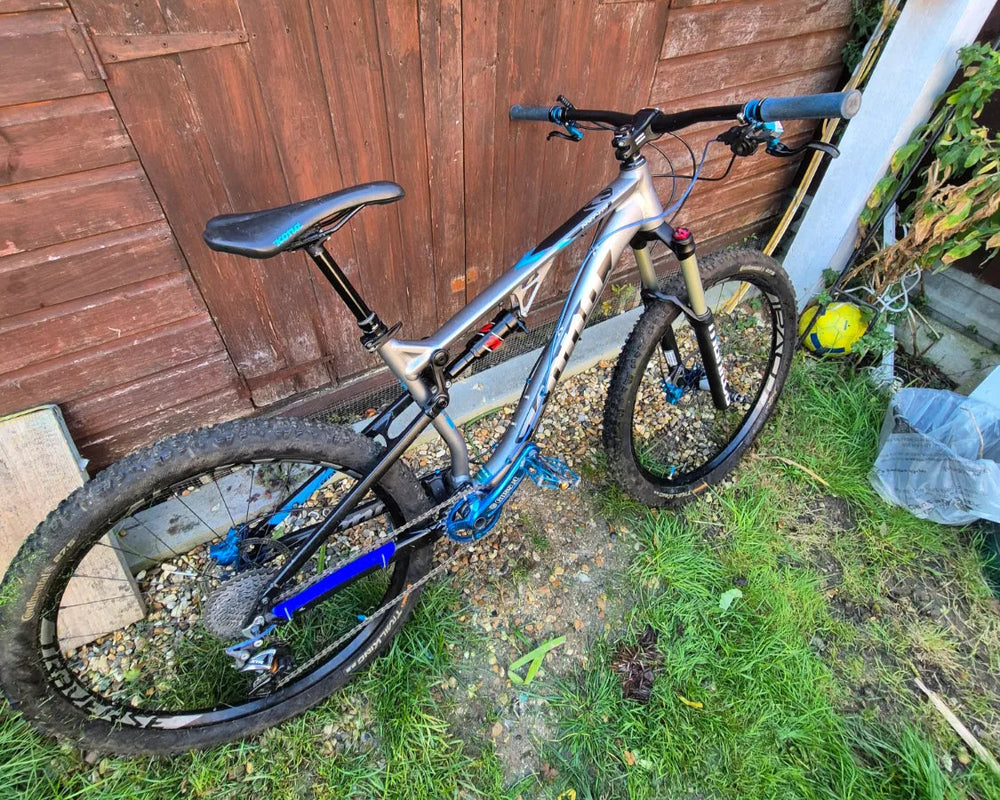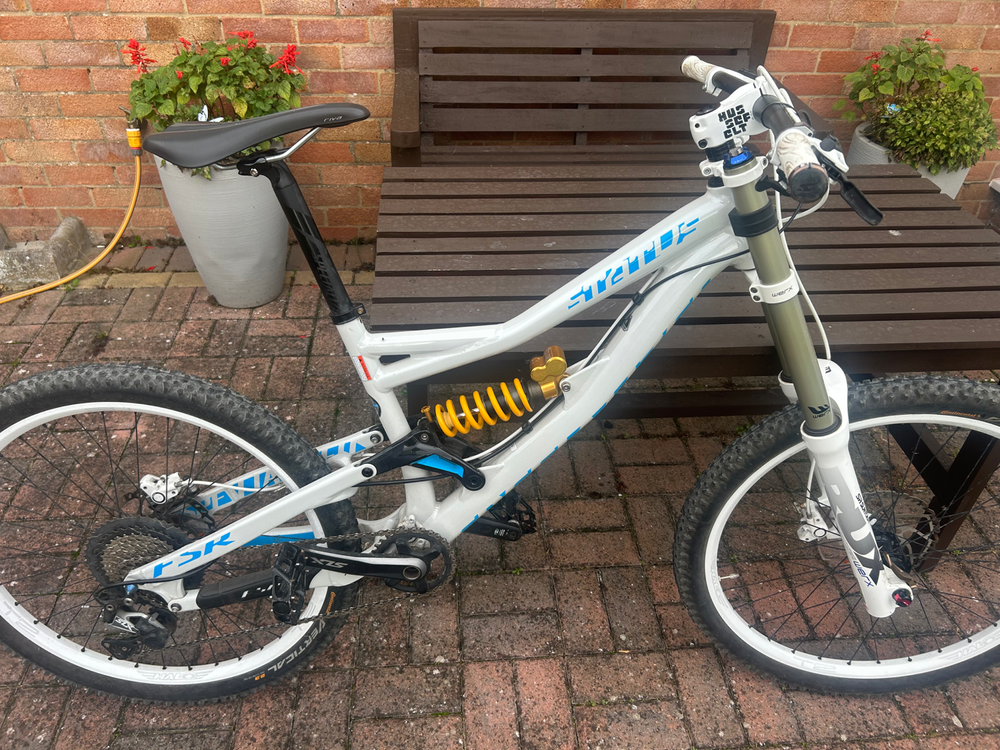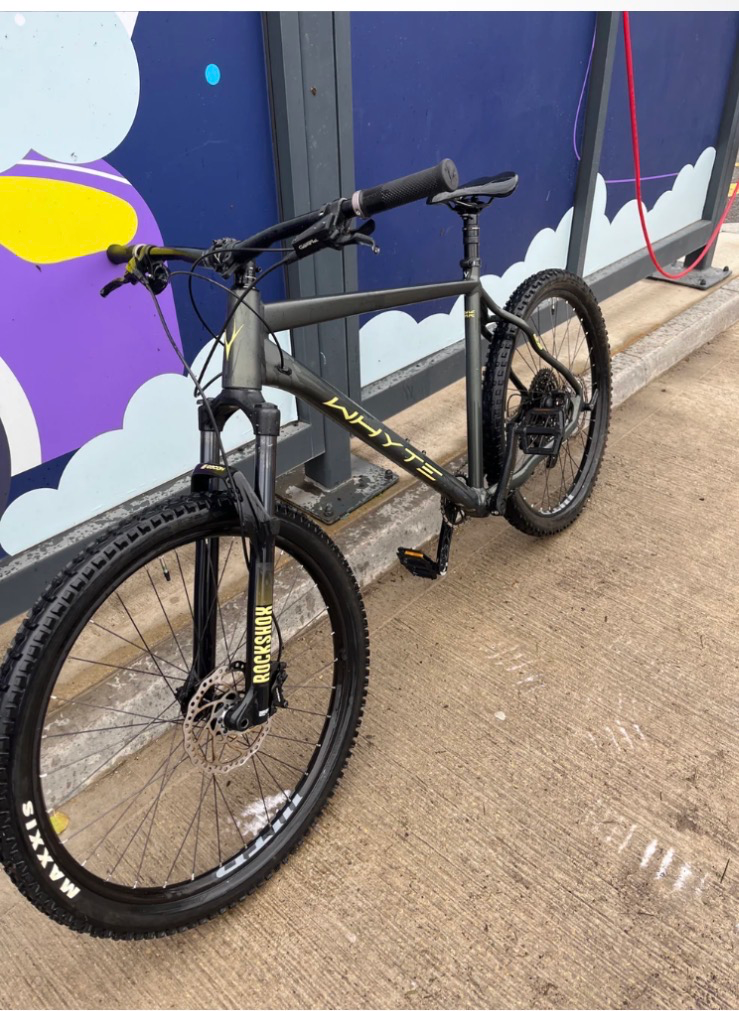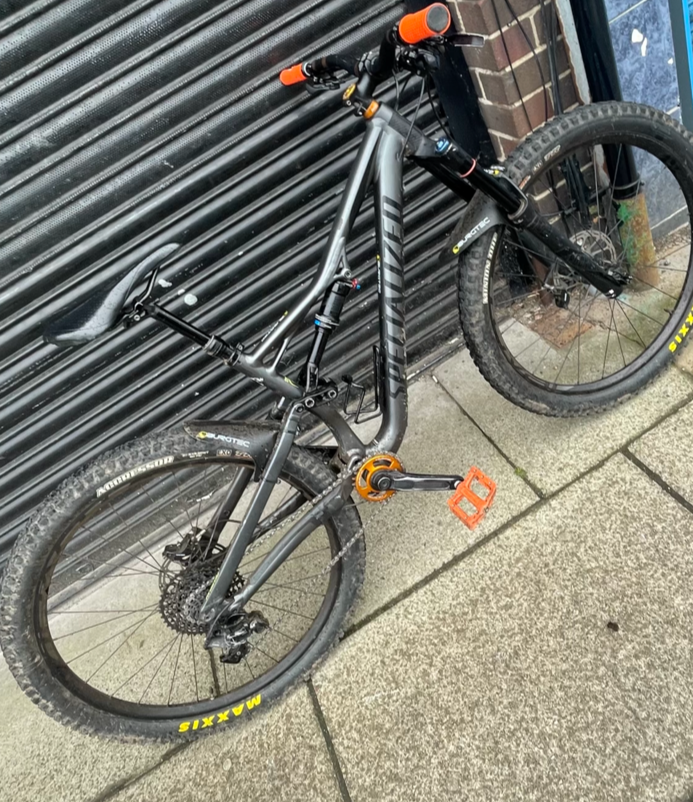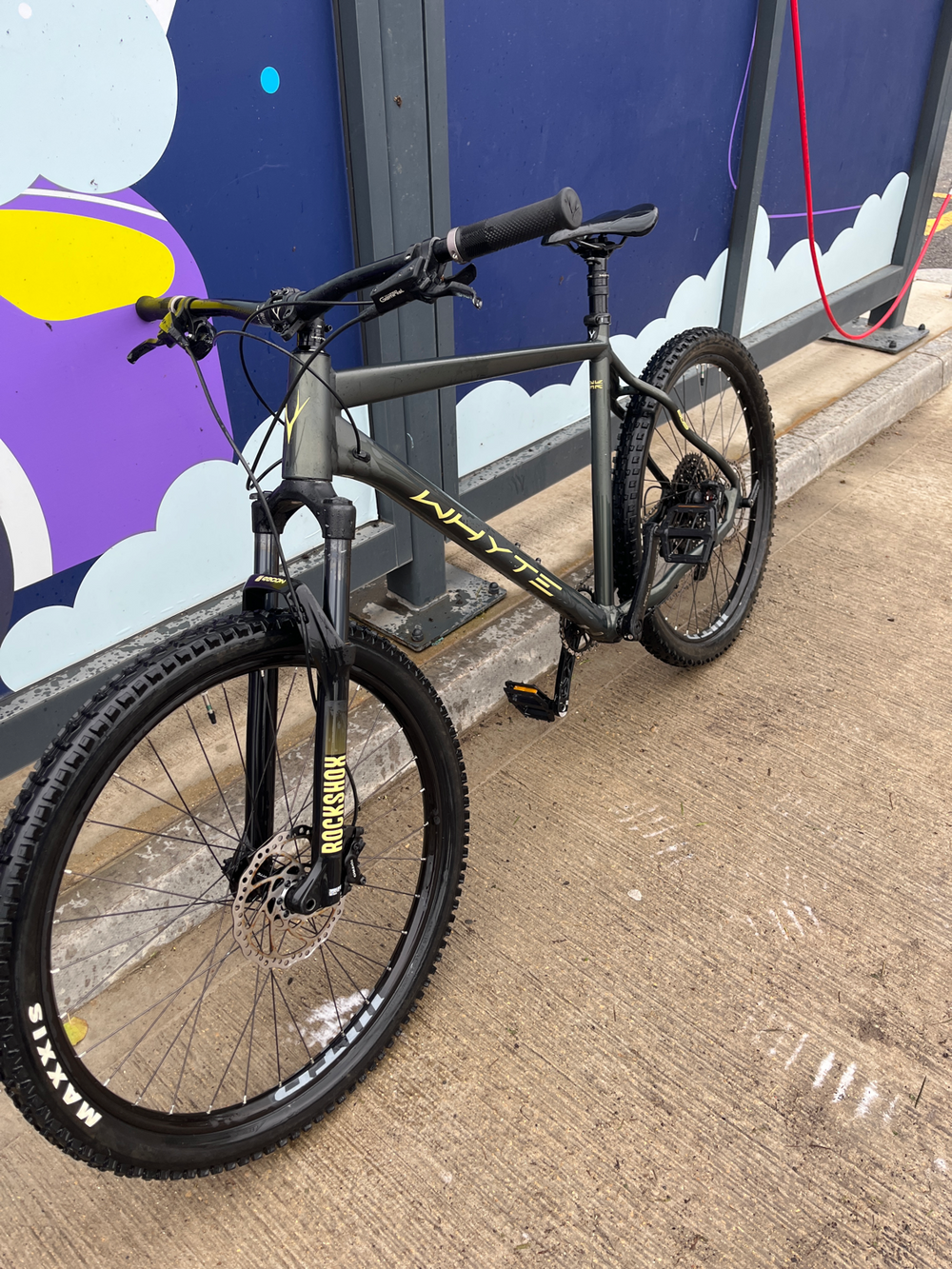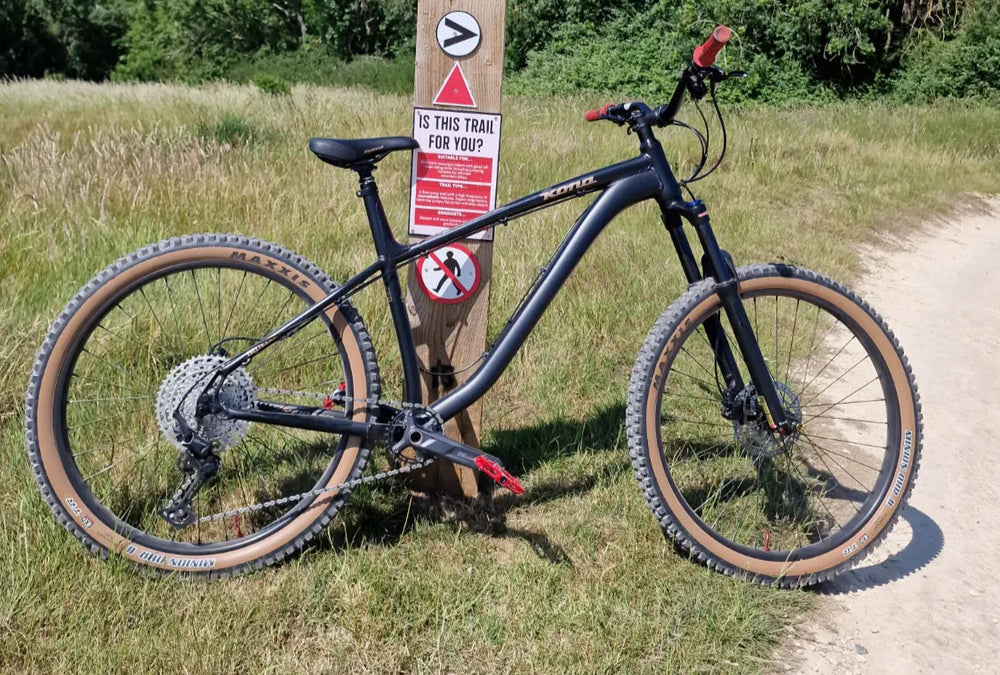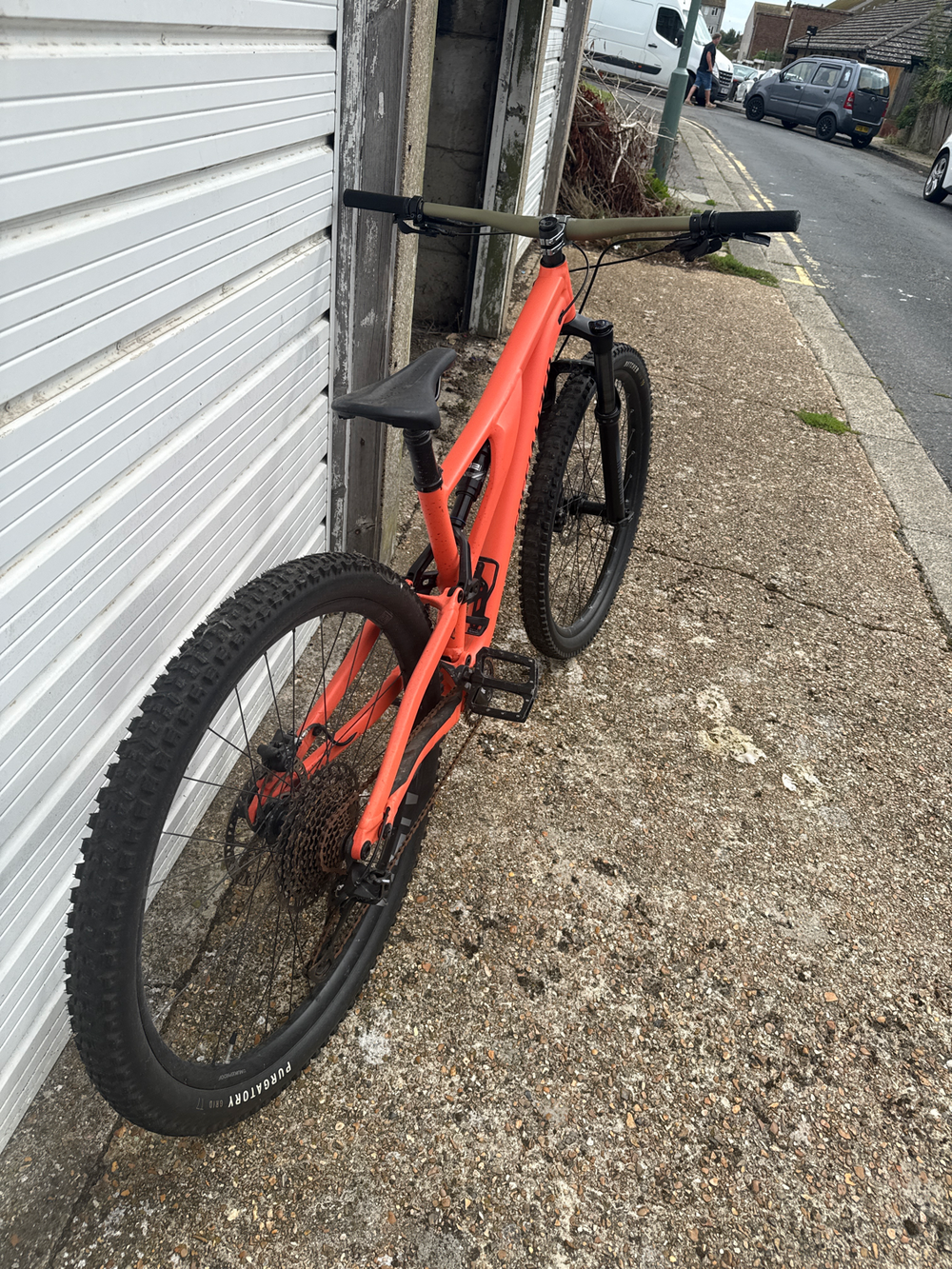Mountain bikes built for the trails - Trail bikes
Trail mountain bikes are a specific type of mountain bike designed for riding on a variety of trails and terrains. They are versatile bikes that balance climbing ability with downhill performance, making them well-suited for tackling a wide range of trail conditions.
Here are some key features and characteristics of trail mountain bikes:
- Suspension: Trail mountain bikes can either be hard-tail or full suspension. The suspension helps absorb impacts and provides better traction and control on rough and technical terrain. The travel (the amount of suspension movement) for trail bikes usually ranges from 120mm to 150mm.
- Frame Geometry: Trail bikes have a balanced frame geometry that offers stability, control, and manoeuvrability on a variety of trail conditions. The geometry typically falls between cross-country (XC) bikes and enduro bikes, with a moderate head tube angle, a longer top tube, and a slightly slacker seat tube angle.
- Wheel Size: Trail mountain bikes are available in different wheel sizes, including 27.5 inches and 29 inches. The choice of wheel size depends on personal preference, riding style, and the type of trails you plan to ride. 27.5-inch wheels generally provide more manoeuvrability and agility, while 29-inch wheels offer better rollover capability and stability.
- Tire Width: Trail bikes often have wider tires compared to XC bikes. Wider tires provide increased traction, stability, and shock absorption on rough and loose terrain. Tire widths typically range from 2.3 to 2.6 inches, but some trail bikes can accommodate even wider tires for added grip and control.
- Dropper Seatpost: Many trail bikes come equipped with a dropper seatpost, which allows the rider to quickly adjust the seat height while riding. This feature enables the rider to lower the saddle for improved manoeuvrability and control on descents, then raise it back up for efficient pedaling on climbs.
- Brakes: Trail bikes typically have hydraulic disc brakes, which provide powerful and reliable stopping performance. Larger brake rotors (usually 180mm or 200mm) are commonly found on trail bikes to provide better heat dissipation and improved braking control on steep descents.
- Gearing: Trail bikes often have a wide range of gears to accommodate varied terrain. They may include a double or a 1x (single chainring) drivetrain, depending on personal preference. The gear ratios are typically optimised for a good balance of climbing efficiency and downhill speed.
- Frame Material: Trail mountain bike frames are commonly made of aluminium or carbon fibre- Aluminum frames offer durability and affordability, while carbon fibre frames provide lighter weight and enhanced vibration damping. The choice of frame material depends on budget and desired ride characteristics.
Trail mountain bikes are versatile and suitable for riders who enjoy a mix of climbing and descending on a variety of trails. They excel in technical terrain, singletrack, and all-mountain riding. Trail bikes provide a comfortable and capable ride, allowing riders to tackle challenging trails with confidence and enjoyment.
How do I find a suitable trail bike for me?
Finding a suitable trail mountain bike involves considering several factors that align with your specific needs, riding style, and budget. Here are some steps you can follow to find the right trail mountain bike for you:
- Define Your Riding Style: Determine your riding style and the type of trails you plan to ride. Consider the level of technicality, the amount of climbing and descending you'll be doing, and the overall aggressiveness of your riding. This will help guide your selection process and the specific features you prioritise in a trail bike.
- Suspension: Decide on the amount of suspension travel you need based on the trails you'll be riding. Trail bikes typically have suspension travel ranging from 120mm to 150mm. More suspension travel provides better capability on rough and technical terrain, but it may sacrifice climbing efficiency.
- Frame Size and Geometry: Ensure that the trail bike you choose comes in a frame size that fits you properly. Refer to the manufacturer's sizing chart or get a professional bike fit to determine the appropriate frame size. Consider the bike's geometry, including the head tube angle, reach, and stack height, to ensure it suits your riding preferences and body proportions.
- Wheel Size: Decide between 27.5-inch and 29-inch wheel sizes based on your personal preference and the type of trails you'll be riding. 27.5-inch wheels offer better manoeuvrability and agility, while 29-inch wheels provide better rollover capability and stability. Test ride bikes with different wheel sizes to determine which feels more comfortable and suits your riding style.
- Suspension Performance: Consider the suspension performance and features of the trail bike. Look for suspension systems that provide good traction, efficiency, and adjustability. Features such as lockout or compression damping adjustment can be beneficial for optimising the bike's performance based on trail conditions.
- Components: Pay attention to the components of the trail bike, including the drivetrain, brakes, wheels, and tires. Higher-end components often offer better durability, lighter weight, and improved performance. Consider the gear ratios, brake type, wheel quality, and tire choice that align with your riding preferences and the terrain you'll encounter.
- Frame Material: Determine the frame material based on your budget and desired ride characteristics. Aluminium frames offer durability and affordability, while carbon fibre frames provide lighter weight and enhanced vibration damping. Consider the trade-offs between cost, weight, and ride quality to find the right balance for you.
- Budget: Determine your budget range for a trail mountain bike and try to find options within that range. Trail bikes can vary in price based on frame material, component quality, and brand. Consider your priorities and the features you need, and find a balance between your desired specifications and your budget limitations.
- Research and Reviews: Read reviews, watch videos, and seek opinions from other riders to gather more information about specific trail mountain bike models you're considering. Look for reviews that highlight performance, durability, versatility, and customer satisfaction.
- Reach out to us! If you're still uncertain or need expert guidance, contact one of our ride guides.


